SUMMER 2023
A Haven for All D&R Canal State Park

































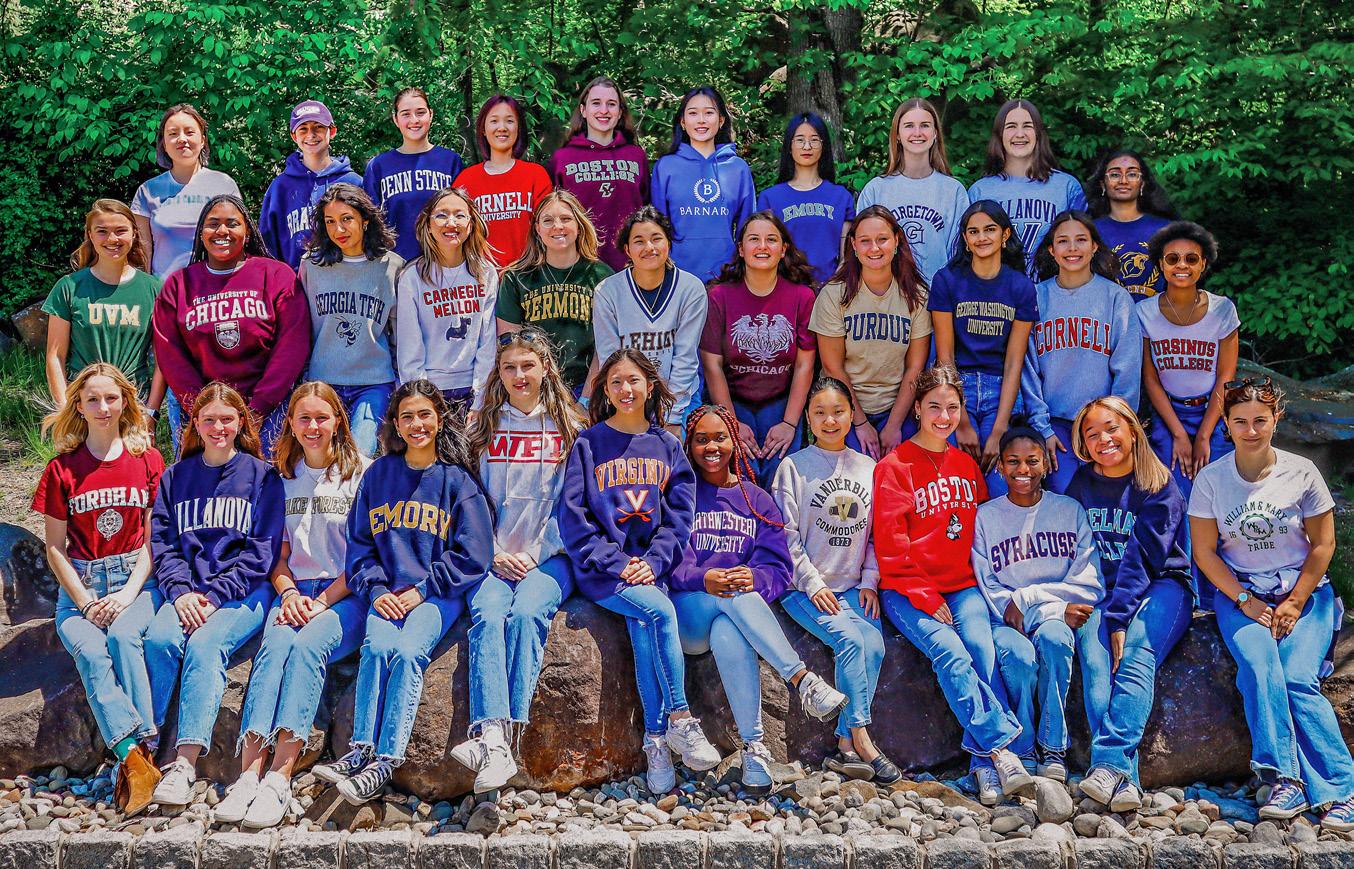
BARNARD COLLEGE
BOSTON COLLEGE
BOSTON UNIVERSITY
BRANDEIS UNIVERSITY
CARNEGIE MELLON UNIVERSITY
UNIVERSITY OF CHICAGO (2)
CORNELL UNIVERSITY (2)
EMORY UNIVERSITY (2)
FORDHAM UNIVERSITY
THE GEORGE WASHINGTON UNIVERSITY
GEORGETOWN UNIVERSITY
GEORGIA TECH
LEHIGH UNIVERSITY
THE COLLEGE OF NEW JERSEY
UNIVERSITY OF NORTH CAROLINA
AT CHAPEL HILL
NORTHWESTERN UNIVERSITY
PENN STATE UNIVERSITY
PURDUE UNIVERSITY
SPELMAN COLLEGE
SYRACUSE UNIVERSITY
URSINUS COLLEGE
VANDERBILT UNIVERSITY
UNIVERSITY OF VERMONT (2)
VILLANOVA UNIVERSITY (2)
UNIVERSITY OF VIRGINIA
WAKE FOREST UNIVERSITY
THE COLLEGE OF WILLIAM & MARY/ UNIVERSITY OF ST. ANDREWS
WORCESTER POLYTECHNIC INSTITUTE


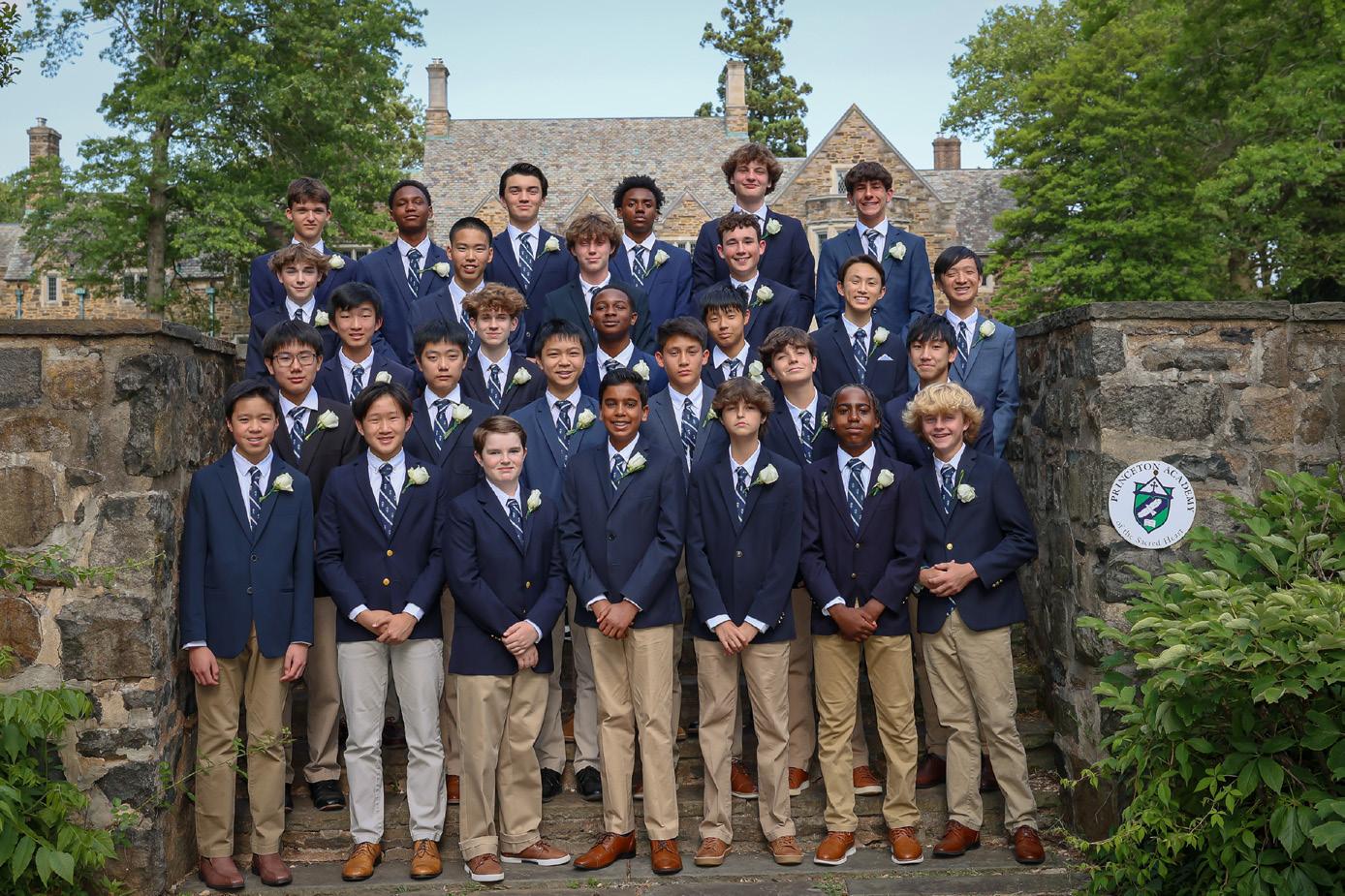
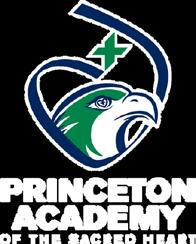
A HAVEN FOR ALL
BY ILENE DUBEFrom its history as a 19th-century form of transportation to its recent renovations, D&R Canal State Park remains a major asset to the region 12

Q&A WITH ALAN S. BLINDER
INTERVIEW BY DONALD H. SANBORN III

On Money, Inflation, and the Banking Crisis 22
TOPIARY

BY ANNE LEVIN
Shrubs That Double as Sculpture 28
MYLESTONE EQUINE RESCUE
BY TAYLOR SMITHGiving Horses a Second Chance at Happiness 38
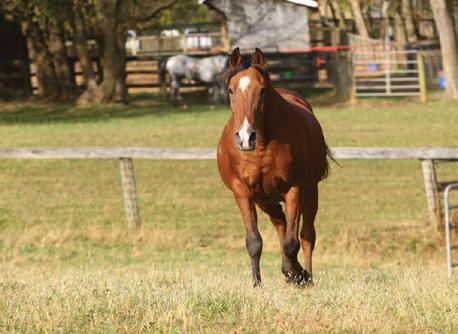
ON THE COVER: Millstone Aqueduct at D&R
LIBRARIANS TELL THEIR OWN STORIES COMPILED BY WENDY GREENBERG

As Libraries Write New Chapters 46
A “SHARED MUSICAL DIALOGUE”
BY DONALD H. SANBORN IIIPrinceton Composers Sarah Kirkland Snider and Steven Mackey 60

FOR BEES’ SAKE!
BY TAYLOR SMITHWhy These Industrious Pollinators are Sacred to Our Food System and Ecological Health

68
CUISINE BY THE SEA
BY LAURIE PELLICHERODining Destinations at the Jersey Shore

76
A WELL-DESIGNED LIFE
 BY LYNN ADAMS SMITH 82, 84
BY LYNN ADAMS SMITH 82, 84




PUBLISHER
J. Robert Hillier, Lh.D., FAIA
EDITOR-IN-CHIEF
Lynn Adams Smith
OPERATIONS DIRECTOR
Melissa Bilyeu
ART DIRECTOR
Jeffrey Edward Tryon
GRAPHIC DESIGNERS
Matthew DiFalco
Vaughan Burton
PHOTOGRAPHER
Vicki Chirco
EDITOR
Laurie Pellichero

CONTRIBUTING EDITORS


Ilene Dube
Anne Levin
Wendy Greenberg

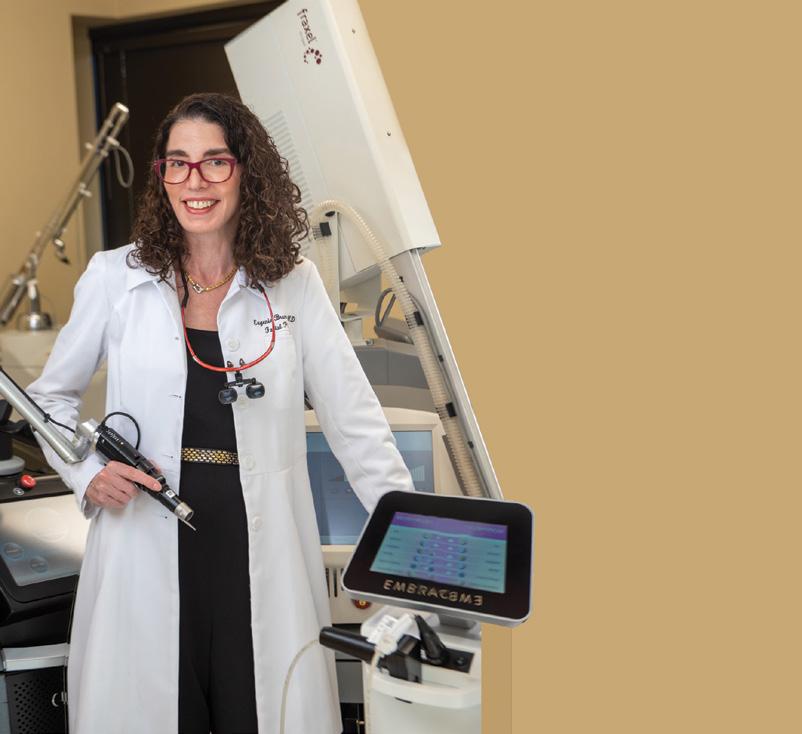
Stuart Mitchner
Donald H. Sanborn III
Taylor Smith
William Uhl
ADVERTISING DIRECTOR

Charles R. Plohn
ACCOUNT MANAGERS
Jennifer Covill


Joann Cella
ADVERTISING OPPORTUNITIES
609.924.5400
Media Kit available on www.princetonmagazine.com



SUBSCRIPTION INFORMATION
609.924.5400 ext. 30 subscriptions@witherspoonmediagroup.com PRINCETON





Editor-in-Chief Lynn Adams Smith and I welcome you to the Summer issue of what we hope is your favorite magazine. You may note that this is the first issue in a new size and profile, creating a more contemporary square shape. Through the good work of our Art Director, Jeff Tryon, working closely with our new printer in Vermont, I believe we have a new generation of the magazine that will surpass past issues.
This issue could best be summed up as “How I spent my summer vacation.” It is literally a guide to all kinds of places and activities where you can tour, learn, contribute, and come away enriched by the experience — all within 1-1/2 hours of Princeton.
Before we go anywhere, let us begin with Donald H. Sanborn III’s Q&A with Alan S. Blinder about money, inflation, and the current banking crisis. Blinder is a professor of economics and public affairs at Princeton University, and a regular columnist for the Wall Street Journal. He served as vice chairman of the Board of Governors of the Federal Reserve System, and he comments on the issue of too much or too little regulation too early or too late. You will not come away feeling any more comfortable, but you will have learned a lot along the way.
Let us begin our summer journeys with writer Ilene Dube leading a tour down the 70 miles of the 19th century Delaware and Raritan Canal that used to carry goods from New Brunswick to Bordentown where they could be put on boats in the Delaware River. The D&R Canal State Park, as it is known, is home to wildlife including 160 species of birds, 90 of which nest in this park. Along the way there are several eagle’s nests that always draw a small crowd of observers with binoculars. With its unusual locks, bridge tenders’ houses, beautiful hand-made bridges, and such interesting little burgs as Stockton and Lambertville, this linear park is a refuge for history lovers, photographers, poets, and painters.
Beyond the park, you will enjoy Anne Levin’s discussion of the history of the art of topiary from its origin in Rome to its coming to this country, and specifically Longwood Gardens. Anne reports that, over the years, portions of Longwood Gardens were brought in from other prominent estates already sculpted. Also, you will learn that the topiary is lit at night, adding interesting patterns to the various sculptures.
Taylor Smith writes two wonderful family enterprise stories for you. The first is an amazing operation, created by Susankelly Thompson and her husband Bruce, that is basically a retirement home for aging horses of all breeds with special needs. It is named Mylestone Equine Rescue after a special horse taken in by Susankelly. The organization works very closely with the New Jersey Department of Agriculture and other local organizations.
Taylor’s second story is entitled “For Bees’ Sake!” When I first saw Jeff Tryon’s beautiful first page of the spread full of lavender flowers, I said, “Oh, is this about growing lavender?” knowing that such crops are essential to the cosmetic industry. What I learned is that lavender is also essential to the honey industry and to the good health of bees.
We’ve all heard about the diminishing number of bees, largely due to their being poisoned by fertilizer and insect repellent used in the maintenance of beautiful lawns. This applies mainly to the strains of honeybees brought in from Europe, beginning as early as 1622. With the right environment like that which the lavender flowers provide, healthy queen bees can lay as many as 1,000 eggs per day and the resulting bees can create raw honey, which is better for you than the pasteurized honey that you buy in the grocery store.
By now, are you getting hungry? Our Editor Laurie Pellichero takes you to the Jersey Shore to sample some “Cuisine by the Sea” at scenic waterside restaurants that thrive in the summer months with a delicious variety of local seafood and other seasonal dishes.
After a great meal, how about a little relaxing music brought to you by a musical couple who live in Princeton? Sarah Kirkland Snider was born and raised in Princeton and today is among the top 35 female composers in classical music in the world. She is married to composer and performer Steven Mackey who was born in Germany, raised in California, and since 1985 has been teaching in the Music Department at Princeton University. Steven performs his own work in concerts. I found the reporting of our Donald H. Sanborn III to be almost a love story of these two artists who found a common interest in a particular type of music and live by a theme of “honesty in music.”
If you want to find a good place to go and read your magazine, our Wendy Greenberg has put together a great spread on the libraries in the immediate region and their librarians. There are several themes in her story ranging from the impact of the COVID-19 pandemic on their operation to the changing role of libraries in today’s society. Look at Florida and Pennsylvania where the defunding of libraries is being considered by the state legislatures on the basis that we don’t need them anymore. Libraries are no longer a warehouse full of books but, in fact, have become the community media center for many towns.
A bit of personal history — when I was a kid, the Princeton Library was located in Bainbridge House, the handsome historic colonial structure next to the Princeton Garden Theatre. The next iteration in its history was around 1960 when a two-story modernist library of about 15,000 square feet was built at the corner of Wiggins and Witherspoon streets. That library was struggling as it served up to 750 patrons a day.
By the 1980s it was decided to build a new library, and I was honored to be chosen to design it. There was pressure to move it out of the center of town where more parking would be available, even though part of the library’s lot was a parking lot. There was also consideration to build a second library and have the current library be a branch. Cooler heads prevailed and, with the help of Philadelphia architect Robert Venturi’s plan for a plaza at the end of Hulfish Street and a parking garage to serve the library and the downtown, the three-story 45,000-square-foot library was built. It also came with lots of conference rooms, study rooms, and, with the arrival of computers, lots of computer stations available for those who could not afford to have one. Within three years, the number of patrons per day had risen from 750 to 2,500 and today, with the further renovations, I believe it may be over 3,000. It has become a true community media and meeting center in the center of what is becoming a walkable community given the new densities expected in the Witherspoon-Jackson neighborhood.
Yes, there is a lot to do and see offered in this issue, but it is all close by so you can visit each place in one day and still get home to Princeton and shop in your own downtown here where our merchants need the business.
Lynn Adams Smith and I wish you a happy summer.
Respectfully yours,
J. Robert Hillier, Lh.D., FAIA Publisher





 BY ILENE DUBE
BY ILENE DUBE
How lucky are we to live in Central New Jersey, with the D&R Canal State Park coursing through our landscape. The 70-mile-long linear park is a thriving wildlife corridor, where dragonflies fall in love, turtles sun on logs, great blue herons wade along the shore, and bald eagles nest overhead. A recent bird survey found 160 species, 90 of which nest in the park.
In addition to being a refuge, activities such as boating, jogging, hiking, cycling, and fishing attract visitors from around the world. With its wooden bridges, locks, spillways, waste gates, stone-arched culverts, and bridge and lock tender houses, the canal is an attraction for history lovers, photographers, poets, and painters.
The upper reach of the feeder canal wanders through several historic New Jersey towns along the Delaware River, such as Stockton and Lambertville. The main canal winds northward from Bordentown through Trenton and continues through Central New Jersey, ending in New Brunswick.
The historic towpath along the main canal from Trenton to New Brunswick offers a natural surface for hiking, jogging, horseback riding, and cycling. From Mulberry Street to Bakers Basin Road, the trail is crushed stone. The trail along the feeder canal is made of fine textured crushed stone.
Before we get to the rich history of the D&R Canal State Park, let’s begin with what’s new.
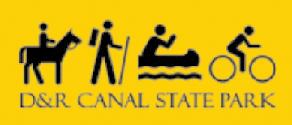
The Byway Visitor Center in Griggstown is now open, thanks to

history as a 19th-century form of transportation to its recent renovations, D&R Canal State Park remains a major asset to the region
the Millstone Valley Preservation Coalition, sponsor of the Millstone Valley National Scenic Byway (a 27-mile loop predominantly along the D&R Canal from East Millstone to Kingston). The center is open Saturdays and Sundays through the last weekend in October. Visitors can stop by between 1 and 4 p.m. to speak with docents and learn about the canal and byway. The Visitor Center is located in the original Griggstown bridge tender’s house where its kitchen is interpreted and furnished for the period 1840-1860. Outside a garden contains period medicinal plantings and vegetables. You can pick up maps, brochures, and pamphlets of trails, historical sites, and recreational opportunities at the center.
The Kingston Canal House (a former bridge and lock house) has had a much-
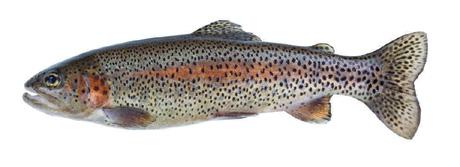
needed makeover. With funding from the Canal Society of New Jersey and in partnership with the Kingston Historical Society, the entire water damaged facade received several fresh coats of paint in addition to other maintenance-type repairs.
Mill, remains closed to continue repairs to the former Belvidere-Delaware railroad trestle bridge, also caused by Tropical Storm Ida. The trestle conveys the state park’s multiuse trail over the Wickecheoke Creek in Stockton.
With a history that dates back more than two centuries, the canal has played a vital role in the development of the region.
After trail damage by Tropical Storm Ida in September 2021, repairs to the Alexauken Creek pedestrian bridge are complete. The crossing is now open for public use.
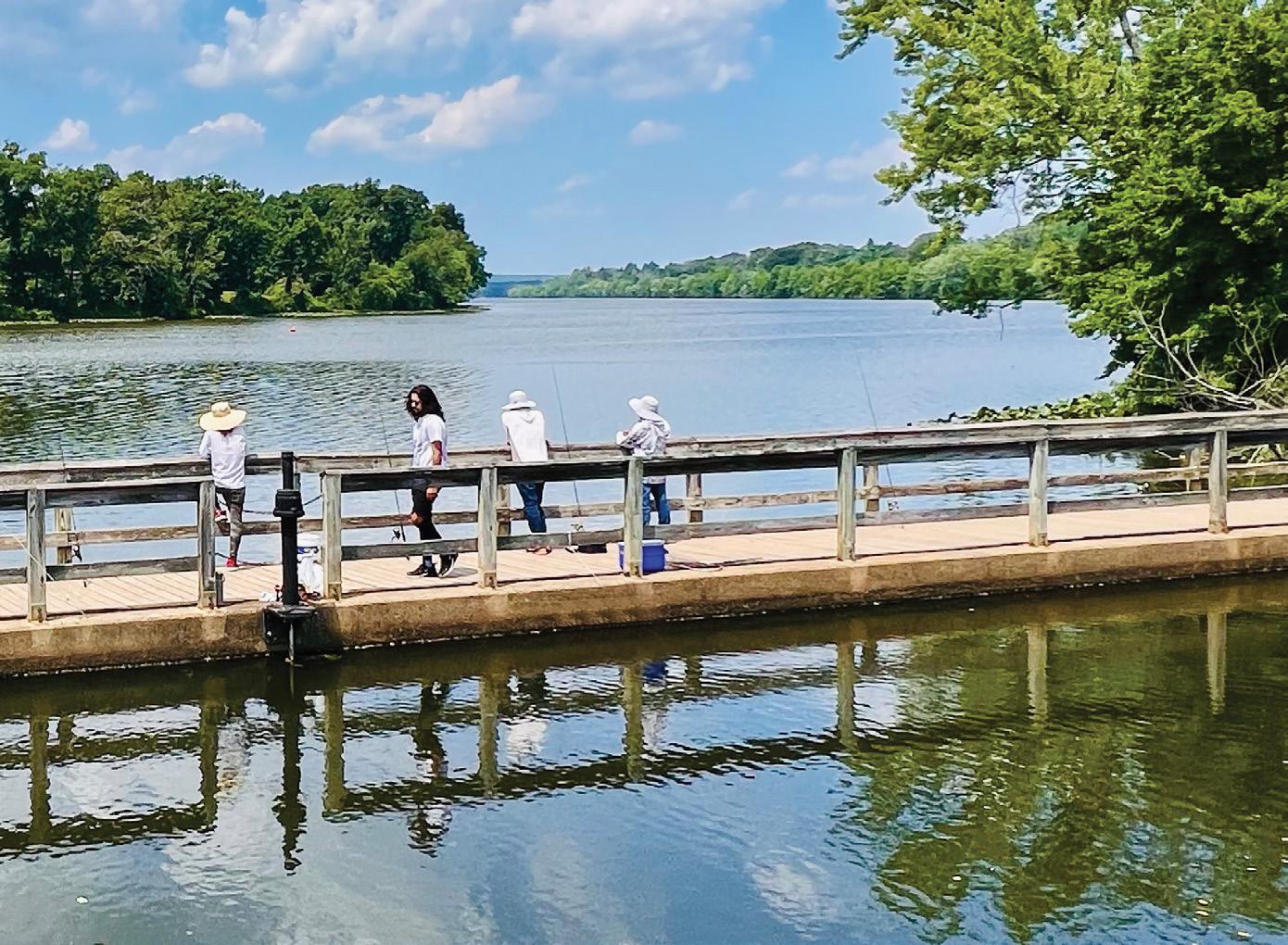
Also, the towpath between Stockton and Bull’s Island, located behind Prallsville
The D&R Canal was first conceived in the early 1800s as a means of transporting goods from Philadelphia to New York City. At the time, there were no railroads or highways, and water transport was the most efficient way to move goods across the region. The canal was designed to run 44 miles from New Brunswick to Trenton, where it would connect with the Delaware River.
“Visitors walking along the towpath may become curious about what was here before. They can learn more about the history through some of the programming we do, such as after-work and weekend walks, and reviewing the material on our website and on our signs. We’re here — anyone can call and pick my brain. The most fulfilling part of my job is getting people to connect.”
Construction of the canal began in 1830 and took more than six years to complete. The work was grueling — thousands of workers were involved in digging the canal by hand. They had to contend with rocky terrain, treacherous slopes, and the threat of flooding.

The canal was largely dug by Irish immigrants. Scores of these workers died when cholera swept through the labor camps in 1832. The workers were buried in unmarked mass graves on Bull’s Island, at Ten Mile Run, and at Griggstown.
Despite these challenges, the canal was completed in 1834 and officially opened for business. It took the better part of two days to travel from Bordentown to New Brunswick using the canal, with a stopover at Kingston. The two-day trip was a big


improvement over the two weeks for water travel going from Philadelphia to New York via the Atlantic Ocean.
The canal quickly became the primary means of transporting goods across the region. Farmers used the canal to transport crops and livestock to markets in New York City and Philadelphia, while merchants used it to move goods between the two cities. The canal also played an important role in the transportation of coal, which was in high demand at the time. During its heyday it was a thoroughfare for mule-powered canal boats, steam-powered vessels, and pleasure boats of all kinds.
From its beginning the D&R Canal was wider and deeper than many similar 19th century canals and equipped with
moveable bridges at every crossing. Lock tenders and lock houses were regular features on most canals; however, the D&R Canal also required bridge tenders and bridge houses for its swing bridges. These houses served as homes for the Canal Company employees stationed at each lock and bridge location.
The D&R Canal helped to spur economic growth in the region. It also created new job opportunities, which helped to improve the standard of living.
Records show that women played an active role in the day-to-day operation of the canal. Census sheets list the names of women who were bridge tenders. These were often the widows who took over the bridge tending duties from their deceased





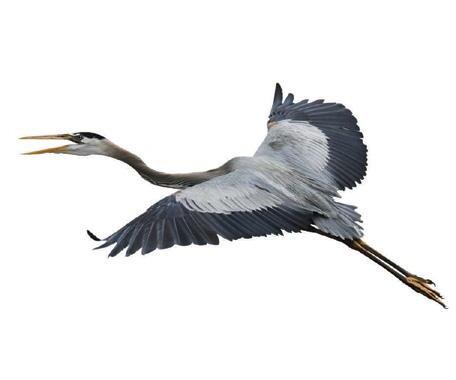
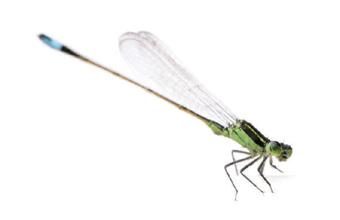


spouses. These women were able to earn a stable income while maintaining occupancy of the canal houses for their families. In some cases, daughters took over the bridge tending duties for elderly fathers.
For nearly a century, the D&R Canal was one of America’s busiest navigation canals. Inevitably the speed and efficiency of railroads overtook the slower pace of canals. The D&R Canal’s last year of operating at a profit was 1892, but it remained open through the 1932 shipping season.
After closing, the canal sat unused for several years. In 1936, ownership was turned over to the State of New Jersey.
In the 1940s, work to repurpose the D&R Canal as a water source began. Thanks to a strong grassroots effort to preserve the waterway from encroachment, pollution, and development, the canal and its



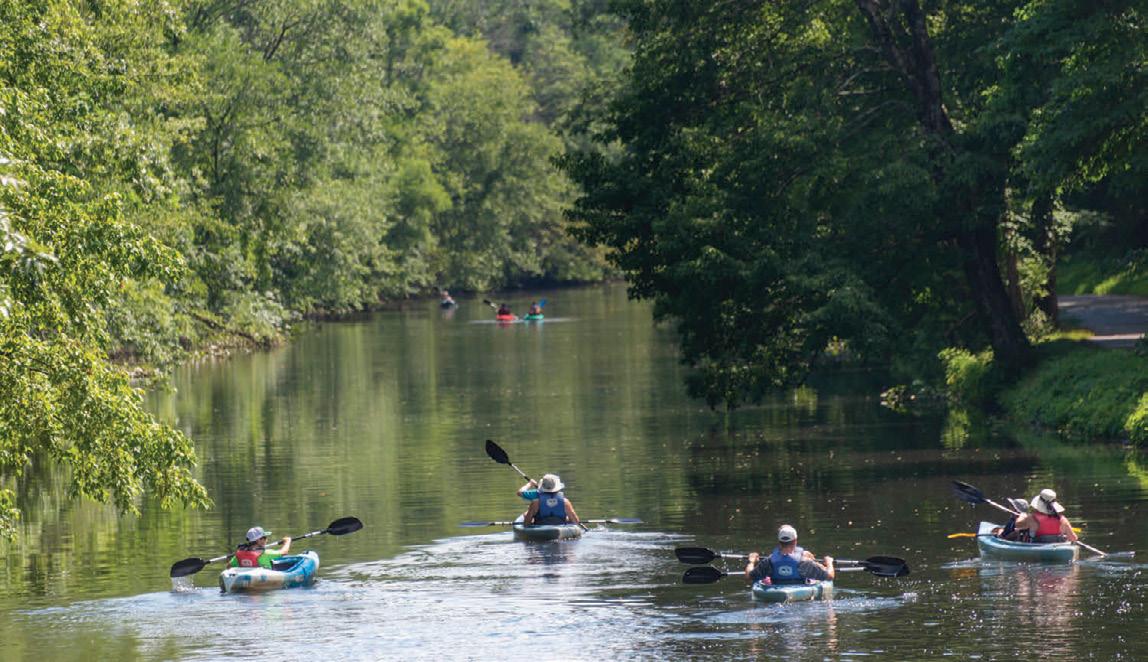
the canal and a narrow strip of land on both banks were made an official state park. A portion of the Belvidere-Delaware Railroad corridor from Bull’s Island to Frenchtown was added to the park in the 1980s.
remaining structures were entered on the National Register of Historic Places in 1973. A year later, more than 60 miles of
The canal serves as a water supply system for much of Central New Jersey. Stream corridors are critical to improving and maintaining water quality entering the canal and the canal park; they allow these areas to store and mitigate stormwater that may contribute to flooding. The Delaware & Raritan Canal Commission’s stream corridor protections and easement program have resulted in one of the largest protected riparian corridors in New Jersey.
“The fact that the water is still in the canal has allowed it to transition from a transportation corridor to a recreation corridor and state park.”
— Vicki Chirco, historian, D&R Canal State Park
• Swimming is not permitted anywhere in D&R Canal State Park.
• Fires of any kind are not permitted.
• Alcohol is not permitted.
• Parking is limited and only permitted in designated areas. Illegally parked vehicles are subject to fines and may be towed.
• Picnicking and grilling are permitted in designated picnic areas only.
• The Canal Towpath is an ideal place to walk, bike, or run.
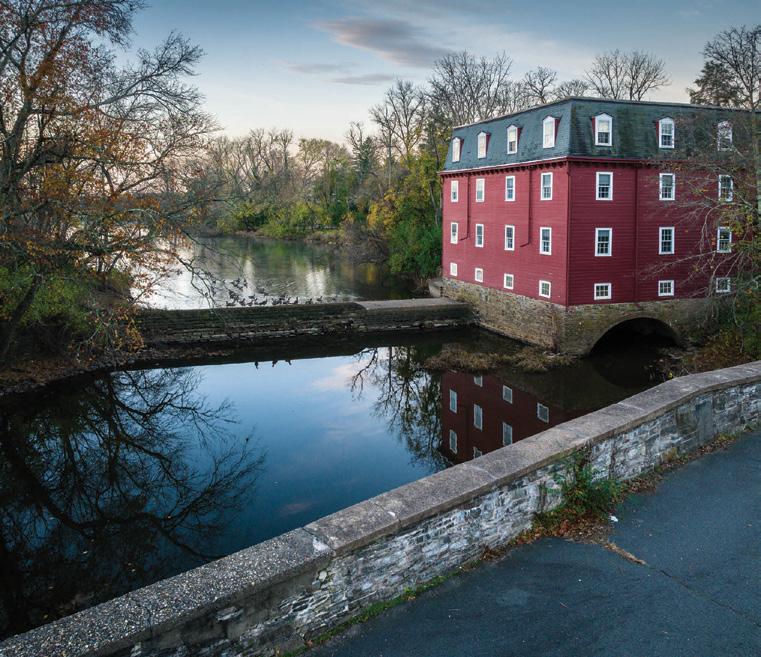

• Canoes and kayaks are allowed along the entire length of the canal.
• Fishing is permitted the entire length of the canal. Trout are stocked at various locations in certain portions of the canal during the spring months. Anglers will find bass, sunfish, catfish, perch, and pickerel year-round.
• Hunters are responsible for knowing the hunting regulations within the state park. The hunting areas may have trails open to the public during the hunting season — be aware of hikers, bikers, and horseback riders. There is no hunting permitted on Sundays within lands managed by the N.J. State Park Service.


• Keep it clean and green by taking your trash home with you, as trash cans are not provided.
• River tubing on the Delaware River is one of the most popular activities at D&R Canal State Park. Big Bear Gear is the only tubing company licensed to operate in the park. For more information on rentals and pricing, visit bigbeargearnj.com.
• River tubes are only permitted to be launched from the Riverview and Fairview parking lots. Tubes then will exit the river at the Point Pleasant parking lot.
For more information, visit dandrcanal.org.
Blackberries
Fresh Flowers

Blackberries • Fresh Flowers
Blueberries
Blueberries
FARM FRESH PRODUCE AT OUR ROADSIDE STAND
FARM FRESH PRODUCE AT OUR ROADSIDE STAND
Blueberries
Blueberries







Raspberries/Blackberries
Raspberries/Blackberries
Raspberries/Blackberries
Raspberries/Blackberries

FARM FRESH PRODUCE AT OUR ROADSIDE STAND CURBSIDE PICK UP & CSA PROGRAM









Flowers
Flowers
CURBSIDE PICK UP & CSA PROGRAM HORROR MOVIE NIGHT
CURBSIDE PICK UP & CSA PROGRAM HORROR MOVIE NIGHT
Flowers
Flowers
HORROR MOVIE NIGHT
ANNUAL FALL FESTIVAL AND MORE, COMING SOON!
FARM FRESH PRODUCE AT OUR ROADSIDE STAND ORROR MOVIE NIGHT
ANNUAL FALL FESTIVAL AND MORE, COMING SOON!
FARM FRESH PRODUCE AT OUR ROADSIDE STAND ORROR MOVIE NIGHT
FARM FRESH PRODUCE AT OUR ROADSIDE STAND ORROR MOVIE NIGHT
FARM
ANNUAL FALL FESTIVAL AND MORE, COMING SOON!
Check our website or social media before visiting the farm for availability of crops and closings due to inclement weather.
Check our website or social media before visiting the farm for availability of crops and closings due to inclement weather.
Check our website or social media before visiting the farm for availability of crops and closings due to inclement weather.






CURBSIDE Check availability
ANNUAL FALL FESTIVAL AND MORE, COMING SOON!
ANNUAL FALL FESTIVAL AND MORE, COMING SOON!
ANNUAL FALL FESTIVAL AND MORE, COMING SOON!











Like us on Facebook and follow us on Instagram @snydersfarmnj
Like us on Facebook and follow us on Instagram @snydersfarmnj
Like us on Facebook and follow us on Instagram @snydersfarmnj
www.snyders-farm.com
www.snyders-farm.com
www.snyders-farm.com
www.snyders-farm.com






Polestar 3 — The SUV for the electric age
Configure yours today polestarprinceton.com



University, and a regular columnist for the Wall Street Journal . Blinder served as vice chairman of the Board of Governors of the Federal Reserve System from June 1994 until January 1996. Before becoming a member of the board, Blinder served as a member of President Clinton’s original Council of Economic Advisers from January 1993 until June 1994. During presidential campaigns, he was an economic adviser to Bill Clinton, Al Gore, and Hillary Clinton.
Blinder has written scores of scholarly articles, and is the author or co-author of 23 books, including the prizewinning best-seller, After the Music Stopped: The Financial Crisis, the Response, and the Work Ahead (2013) and Advice and Dissent: Why America Suffers When Economics and Politics Collide (2018). His latest book, A Monetary and Fiscal History of the United States, 1961-2021 was published in October 2022 (Princeton University Press). Blinder earned his AB at Princeton University, M.Sc. at London School of Economics, and Ph.D. at Massachusetts Institute of Technology — all in economics.
Here, he discusses his latest book, as well as inflation and the current U.S. banking crisis.
In your introduction to A Monetary and Fiscal History of the United States, 1961–2021 , you ask rhetorically, “How does the past shape today’s attitudes,
options, and debates over monetary and fiscal policy? What worked and what didn’t — and why?” How would you answer these questions, or guide the reader toward possible answers?
I try to guide the reader, in the book — it’s chronological — through historical episodes, both of fiscal and monetary policy, including times when
— which runs up to 2021, leaving us a little bit short of the Federal Reserve’s tightening of monetary policy that started in 2022.
You specify the time frame in the title. How did you choose that period?
I started there for three reasons. One is my age; I was a teenager in 1961 (and pretty soon an undergraduate at Princeton — when the Kennedy-Johnson tax cut passed).
A more interesting reason is that the Kennedy-Johnson tax cut was the first instance of deliberate, as opposed to accidental, use of fiscal policy to move the economy, in this case to make it grow faster with a tax cut. We hadn’t done that before in America. Other countries were ahead of us in that respect. But it was a new idea in policy circles here; it was called the “new economics.”
The third reason, which is germane to the title of the book, is that Milton Friedman and Anna J. Schwartz’s epic A Monetary History of the United States, 1867-1960 ended in 1960. I wanted to pick up the story there, and didn’t have any wish to overlap with their story.

You note that the phrase “Those who cannot remember the past are condemned to repeat it” is a cliché, but one that is often too true. What repeating patterns appeared to you as you researched the book?
they were at loggerheads — sometimes literally fighting, at times when they were cooperating, pulling in the same direction. And then, at times when only one of the two arms of stabilization policy was operating — and the other was either asleep or paralyzed. There are examples of every one of those sorts of episodes in the 60-year history covered by the book
Monetary and fiscal policy is sometimes well-tuned to the current circumstances (the dosage is roughly right) but sometimes it isn’t—and we see episodes of this in the history, where you get too much stimulus, or too much contraction, or the two arms of stabilization policy are fighting each other, which is not normally a good idea.
We learn about lags in monetary policy, which is germane today, and the
danger that poses — that either a monetary tightening or a monetary easing (these days it’s a monetary tightening) could go on too long, because policymakers forget to account for the lags properly, and they put tightening in the pipeline, but the effects haven’t shown up yet, so they keep on tightening.
We learn that there are cases — the recent circumstance is not such a case, where monetary or fiscal policy both pushed in the wrong direction. Maybe most importantly, from the point of view of an academic, we learn of instances in which fads and fancies — I don’t even want to call them “theories,” although they pose as theories — sometimes grip policymakers, leading to grievous errors, both on the fiscal and monetary sides.
So, I talk about monetarism, rational expectations, and supply-side economics as examples — doctrines that may or may not have had intellectual foundations, but if and where they did, were not applied very well in the policy arena.
Of the events you cover in the book, what aligns most closely to our current financial situation (the banking crisis)?
The savings and loan crisis in the 1980s. (It actually has roots late in the 1970s.) I don’t spend much time on that, actually, in the book, but that is the closest parallel. What happened then is the Federal Reserve raised interest rates sharply to fight inflation — as has happened recently — and a bunch of financial institutions (in those days it was thrift institutions, savings and loan associations; more recently it’s been banks like Silicon Valley Bank) had an unbalanced book in terms of interest rate risk. Concretely, they had assets that went down in value when interest rates rose, and the rates they had to pay to their depositors rose with market interest rates.
On April 12 CNBC reports that inflation rose just 0.1 percent in March and 5 percent from a year ago as “Fed rate hikes take hold.” What is your reaction to this news, and what should happen from here?
I think it’s a little bit of good news, but I’m not sure how much of it to attribute to Fed rate hikes. One thing we learn from history, and from statistical studies (econometric studies of the economy) is
that monetary policy works with very long lags. The Fed’s only been tightening for about a year. So, it’s still a little early to be expecting major effects, of the Fed’s tightening, on inflation.
The other place where there are clear and sharp historical parallels is between the recent situation — by “recent” I mean going back to the pandemic and the war on Ukraine, right up to the current moment — compared to the 1970s and 1980s, when the dominant influences on inflation were supply shocks. Oil and food jumped in price, causing a lot of inflation quickly, while socalled core inflation — excluding food and energy — moved up also, but much less.
many industries, in many different places. That was something new, that really did not have an historical parallel — at least not in the period of time that I’m talking about. I think you have to go back to the demobilization from World War II to find parallels to that aspect.
In any case, you have these adverse supply events. While it was a new thought in the 1970s, and people like me — who were trying to persuade people that you should look at core inflation, which excludes food and energy, as well as headline inflation, which includes food and energy — had a bit of a struggle. I remember people saying, “Don’t people pay for food and energy?” Of course they do, but if you’re thinking about monetary policy, what in the world can the Federal Reserve do about food and energy prices? The answer is: next to nothing.
They can do things about the rest. That was a new, and not fully accepted, story in the 1970s and 1980s. By now, it’s not new, and it’s pretty much accepted. For a long while, headline inflation was behaving much worse than core inflation. Just recently, that has reversed; we now have core inflation a little bit higher than headline inflation, which has not been the case for most of the last two years.
In February, you wrote in the Wall Street Journal that inflation had fallen to a sufficient extent that the Federal Open Market Committee (FOMC) should debate pausing rate hikes. Would you write the same piece now?

(Shutterstock.com)
A similar script was followed in the recent inflation. If you ask how the inflation rate in the United States briefly got up to 10 or 11 percent, it was not mainly because of an overheated economy from too much fiscal or monetary stimulus — those were minor contributors. The main reasons were that energy prices started soaring, even before the war in Ukraine (and then they soared more after it); and food prices started soaring after the war in Ukraine started. On top of that, because of the aftermath of the pandemic, we had all these supply bottlenecks all over the place — in
Sort of. I do think the Federal Reserve should be thinking seriously about pausing their interest rate increases, but it’s not for the reason that I wrote about in February. [Now] it’s mostly because of what has happened recently to the banking system — Silicon Valley Bank, Signature Bank — and concerns about two things: First, further contagion to the rest of the banking system; knock on wood, that’s looking pretty good right now. And second, diminution in bank lending as a result of these travails — that is not looking very good right now; the recent numbers on bank lending are suggesting contraction, and that’s going to take a bite out of economic growth.
The Federal Reserve has been raising interest rates, trying to slow down economic growth, as a way station to
slowing down inflation. Now the Fed is getting some of that slowing down from the banking crisis (if you want to call it a crisis). That seems to me a good reason to pause. The banking crisis may not prove to be a real crisis — more a molehill than a mountain — in which case the Fed probably wants to go back to raising interest rates further, to fight inflation. But we don’t know that right now, so that’s why I think they should pause.
If you were still the vice chairman of the Board of Governors of the Federal Reserve System, what course(s) of action would you be advising, and what needs to happen to avoid or minimize a similar banking crisis in the future?

I’d be urging the FOMC to pause its interest rate hikes, until the dust settles. Secondly, I would be urging — and I think the Fed or the Congress will do this — to backtrack on the regulatory easing that Congress did in 2018. Famously, the line for extra scrutiny and tighter regulation of banks was drawn at $50 billion in the Dodd-Frank Act of 2010, but, then raised to $250 billion in 2018.
I think $50 billion was too low, and that was a mistake. But raising it to $250 billion was too high. Silicon Valley Bank was under the $250 billion threshold (they were at $215 or $220 billion in assets) — and therefore were not subject to the extra scrutiny and tighter regulation of large, systemically important banks. I think that was an error that will be corrected, and should be corrected.
What do you most want readers to know about your book, A Monetary and Fiscal History of the United States, 1961-2021 , and/or current financial news?


of Princeton University Press)
I quote this in the book: Mark Twain famously said, “History doesn’t repeat itself, but it often rhymes.” You want to learn the rhymes, because there is rhyming in history.
We’re going through that right now. You asked me what was the closest parallel [to the present]; and there are several historical parallels. We should learn from what policymakers did right, and what policymakers did wrong, in those parallel — but not identical — circumstances. And then, to really get it right, we need to adjust for the particularities of what we’re living through now.
The Silicon Valley mess is not the same as the savings and loan crisis. The inflation problem faced by Jerome H. Powell and the Fed is not the same as the inflation problem faced by Paul Volcker and the Fed in the early 1980s. The supply shocks buffeting the economy in those two periods are not exactly the same, and you need to adjust policy for that. But there are similarities. It rhymes.
989 Lenox Drive Suite 101 Lawrenceville, NJ 08648 (609) 520-0900
Divorce / Custody / Parenting Time / Marital








This impressive 5000 square foot expanded colonial (2010) emanates all the comforts and conveniences of today’s upscale suburban lifestyle. A perfect floor plan for modern living and the multigenerational household. This exceptional home boasts numerous updates, a first floor bedroom with full bath, home office, finished basement with an egress window, and a beautiful rear yard with an inviting in-ground pool.
CRS, e-PRO, ASP, SRS, CLHMS



Sales Associate, REALTOR®



253 Nassau Street | Princeton, NJ 08540 Cell: 908.391.8396 | Off.: 609.924.1600

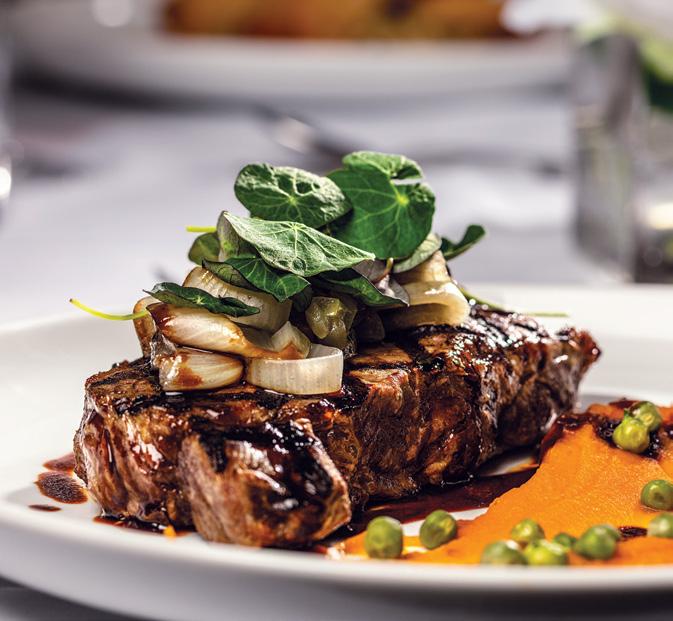
donna.murray@foxroach.com donnamurrayrealestate.com























 BY ANNE LEVIN
BY ANNE LEVIN
t all began with the Romans. Topiary, those shrubs carved into fanciful shapes representing everything from the animal kingdom to wedding cakes, has been in practice at least since the first century. It was then that the lawyer and author Pliny the Younger, known for his detailed accounts of life during the Roman Empire, described the cypress animals, figures, inscriptions, and obelisks on the grounds of his villa on the Tuscan coast. While the term “topiary” is most associated with the formal estates that boast towering, green sculptures, it also applies to the potted herbs and woody plants, trained into defined shapes, that might be found in normal-size, residential gardens. Sculptural plants based in urns and classic-style containers can add symmetry to even the most compact outdoor spaces. But we are focused here on the fantastic. While the excesses of topiary gardening fell out of practice with the collapse of Rome and stayed largely dormant for nine centuries, there was a resurgence around the time of the Renaissance. In Italy, France, and England, it eventually regained popularity.
The world’s oldest topiary garden is Levens Hall, an Elizabethan manor in Britain’s Lake District. The garden still survives in its original design. Huge yew and beech hedges from the 1690s form elaborate garden rooms, and shrubs with “top hats” seem to balance on a single trunk. More than 100 specimens, including abstract pyramids and columns, are on the meticulously manicured grounds.
In France’s Dordogne Valley, there is the Chateau de Marqueyssac, where acres of boxwoods are trained to mimic the valley’s surrounding hills or the backs of grazing sheep. There are more than 150,000 of them, some dating back to the 1860s. After some years of decline, the topiary gardens were restored to their old character — and then some — when the property was purchased by a new owner in 1996. Today, Marqueyssac is classified among the Notable Gardens of France by
the Committee of Parks and Gardens of the French Ministry of Culture. Drummond Castle in Scotland, Chateau de Villandry in France, Ladew Gardens in Maryland, and Britain’s Cliveden are other notable topiary locales. And then there is Longwood Gardens.

Located in Kennett Square, Pa., an easy day trip’s distance from Princeton, Longwood’s topiary garden is considered one of the best examples of its kind in the United States. It was established by Pierre S. du Pont, who purchased the property, a once-thriving arboretum that had fallen into disrepair, in 1906. Though he bought the land simply to save the trees from being cut down for timber, du Pont soon began transforming the farm that occupied it into a garden of horticultural display.
Eventually, topiary became a prominent part of the mix. The 1,077-
acre site also includes indoor gardens, fountains, greenhouses, and 4,600 different types of plants and trees. Today, there are 35 topiary specimens on the grounds.
“In 1936, Pierre du Pont took what used to be the old vegetable garden and turned it into the sundial garden,” said Troy Sellers, one of three outdoor display managers at Longwood Gardens. “He planted 11 large taxus (yew) shrubs, and that’s how it all started. Then, in 1958, he bought 30 pieces from a Long Island estate. They were already 40 years old and shaped. That was the second phase.”
Those large yew topiaries in six different designs came from the estate of Mrs. Harrison Williams, who became the Countess Mona von Bismarck after her next marriage. The topiaries were planted among the existing yews that surrounded Longwood’s sundial. A few years later, more specimens were added from additional sources, and the space was officially renamed the Topiary Garden.
The skilled workers who shape topiary are called shearers. Keeping the specimens in shape is a complex job. Sellers has been at it for 28 years.
“A lot of the shapes were already predetermined when I got here,” he said. “So, we’ve sort of just kept them that way, making minor changes. As they get older, the branches start to droop a bit, so you have to make adjustments. But we’ve pretty much kept it as it is.”
“Through the 1970s and 1980s, the caretakers of the Longwood Topiary Garden added many whimsical pieces to the landscape, including one large, rounded shrub in which [former Topiary and Rose Garden Head Gardener Dave] Thompson created a tail, thinking it resembled an animal,” reads an article on the Longwood website. “He added some eyes and the start of ears but couldn’t tell if it was more a dog or a bird, until a group of young children came into the garden one day and excitedly declared it ‘Snoopy’s dog house.’ A swan made its debut in the 1980s, but unfortunately succumbed to drainage issues, hot summers, and heavy snows.”
Children are among the biggest fans of the Topiary Garden. “They run around, and they love it,” said Sellers. “They play hide and seek and try to figure out

 Levens Hall in Cumbria England. (Wikipedia/Rbagotlevens)
Gardens of the Chateau de Marqueyssac in Dordogne Valley. (Shutterstock.com)
Levens Hall in Cumbria England. (Wikipedia/Rbagotlevens)
Gardens of the Chateau de Marqueyssac in Dordogne Valley. (Shutterstock.com)
what the pieces are. It’s great to hear their interpretations.”
Along with Snoopy, the topiary at Longwood includes other animals, iconic wedding cakes topped with birds, and seven of the original 11 domes that were planted in 1936. The best time to see them, said Sellers, is the end of July or early August, into early fall.


“We start shearing at the end of June, which is when the plants’ growth is completely elongated,” he said. “It takes from three to five weeks. If it’s hot, or it rains, it takes even longer. If we shear it before it’s completely done growing, that’s not good. So, we wait until the optimal time. They’ll get a little bit of growth in early fall.”
A succession plan is always in place. Backups are ready to be planted in place of the specimens that die out.

Sellers has visited other topiary gardens, notably on a trip to France.
“Over the years, I’ve seen quite a bit,” he said. “I think we’re right up there, especially here in the U.S., because of our history, and the fact that we still have some of the older plants. That’s what makes us unique.”
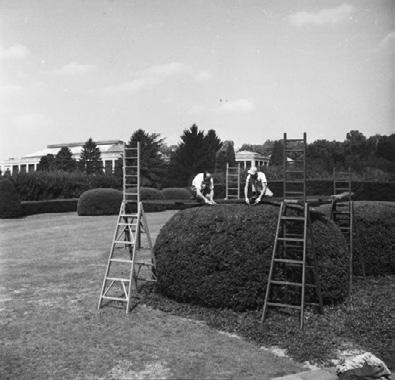

 “Nightscape” topiaries. (Photo by Hank Davis/Courtesy of Longwood Gardens)
( Photo by Matthew Ross/Courtesy of Longwood Gardens )
“Nightscape” topiaries. (Photo by Hank Davis/Courtesy of Longwood Gardens)
( Photo by Matthew Ross/Courtesy of Longwood Gardens )






Classes are designed for all ages to build confidence, artistry, discipline, and foster students’ love of dance. Our world class faculty is dedicated to helping each student reach their full potential, with spacious studios, new state-of-the-art dance floors, and live music. The perfect environment to learn and grow!
 *enter code in the comment box
*enter code in the comment box


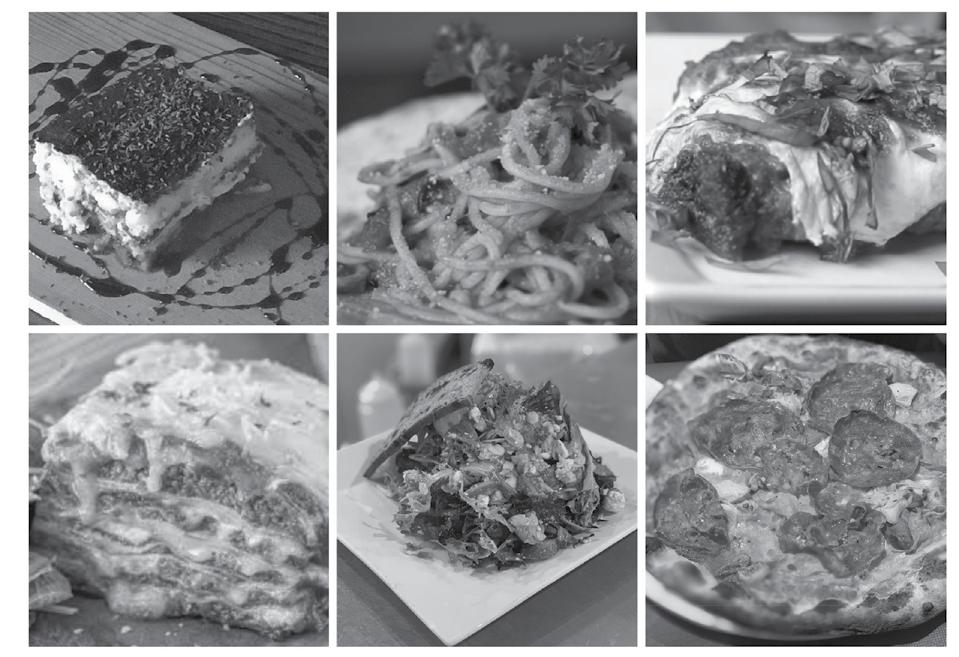
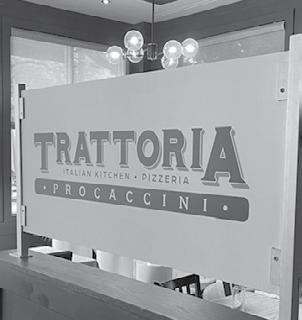

 BY TAYLOR SMITH
PHOTOGRAPHS COURTESY OF MYLESTONE EQUINE RESCUE
BY TAYLOR SMITH
PHOTOGRAPHS COURTESY OF MYLESTONE EQUINE RESCUE
Mylestone Equine Rescue is New Jersey’s first all-breed horse rescue, meaning that all breeds and pedigrees of horses are welcome to its relaxing and scenic pastures. The organization, located in Phillipsburg, was founded 29 years ago by Susankelly Thompson and her husband Bruce. The couple’s children Samuel and Austin have grown up with the rescue organization and have also participated in the care and keeping of the horses, making it truly a family affair.
Susankelly T hompson has always had a deep love and respect for horses. In childhood, she had a pony named Dapple Duchess. Her grandfather and mother were also horse riders, so when she decided to take horseback riding lessons, it seemed like a natural fit.
But she soon learned that many lesson horses and camp horses (horses that are sometimes used at summer camps) end up going on the auction block once they are no longer useful for those purposes. This realization prompted Thompson to dream of one day helping the older horses that worked so hard but were often disregarded without any thought or compassion.
The idea for Mylestone began when Thompson purchased a gelding named Myles. She was looking for a horse to ride and even though Myles was only barely ridable and too thin from over exercise and jumping, she believed that she could rehabilitate him back to good health. Slowly but surely, Myles gained weight and formed a bond with her. “He was very protective of me,” she says. “I believe he knew I rescued him.”
Myles later began to develop a neurologic disease called equine protozoal myeloencephalitis (EPM) that effects a horse’s spinal column. This meant that he had trouble trotting and became very uncoordinated.
“Tragically, I had to have Myles humanely euthanized,” says Thompson. “I was just devastated. I made the decision that Myles’ legacy would live on because Myles was a ‘milestone’ in my life, I founded Mylestone Equine Rescue in his honor.”
The Phillipsburg farm property is 22 acres and currently houses 25 happily retired horses and one goat who is a companion to a miniature horse named Mini Pearl. “We have a main barn for many of the horses and the rest of the horses live outside with sheds 24/7,” says Thompson.
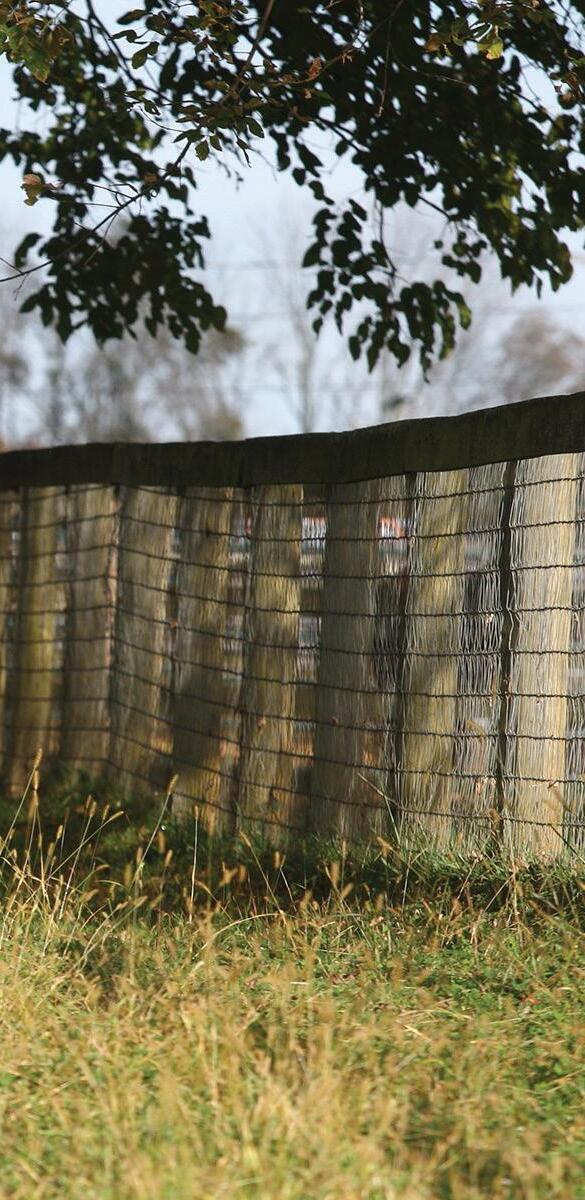
When asked how Mylestone learns of horses that need rescuing, Thompson explains that they receive phone calls from the New Jersey Department of Agriculture, concerned residents , and the horse owners themselves. “In some situations, the actual owners call and some of them have let their horses’ conditions deteriorate for far too long before asking for help,” she says. “We do not have the legal authority to go onto someone’s property to remove a horse. Everything is done through the legal system, the Department of Agriculture, local humane societies, animal control , or the police.”

According to New Jersey state law, horses are considered livestock and have a different set of rules than domesticated animals. “In some scenarios the owners will surrender the horses to us, in which case the authorities are not involved,” explains Thompson.
Each horse at Mylestone has their own unique story. Shadow has one of the most heartbreaking. When Shadow came to Mylestone in 2005, he had terrible scars because his owners castrated him without medication. He had also become blind due to those same owners injecting him with antibiotics that were not meant for equines. Shadow then had to have one eye removed when it became infected. When he first arrived at Mylestone, Shadow was understandably terrified and completely unable to tolerate the touch of any men. Thompson was the only one he allowed to catch him or care for him.
Over the past 18 years, Shadow has healed from his emotional and physical wounds. “He now allows my husband to put on and take off his blankets and hold him for the farrier to trim his hooves,” says Thompson. “Just the other day, after 10 years, he allowed one of the board members to catch him and put his halter on. This is wonderful because up until now, I was the only one who could catch him.”
Shadow now lives in a round pen with his best buddy Jackson. “Sometimes he and Jackson will whinny because they
want horse treats,” says Thompson.
Another well-known resident is Scout, Mylestone’s “gentle giant” at 17.2 hands high. Scout is a percheron draft cross breed and was rescued from Canada in 1998 when he was only 2 to 3 months old. Scout was a by-product of the hormone replacement drug industry. He had never been handled. Scout is now 25 years old and is the farm’s official greeter for tours and visitors.
“Over the years, Scout has been used in our grooming program with special needs students,” says Thompson. “Because of his large size, four to five students can groom him at a time. Scout lives up to his official name, ‘ Scout’s Honor.’”
With all that these abused horses have been through, Thompson reassures visitors that they are still able to trust humans at some level. She also emphasizes that the horses are extremely sensitive beings and are thankful for their routine and natural surroundings.
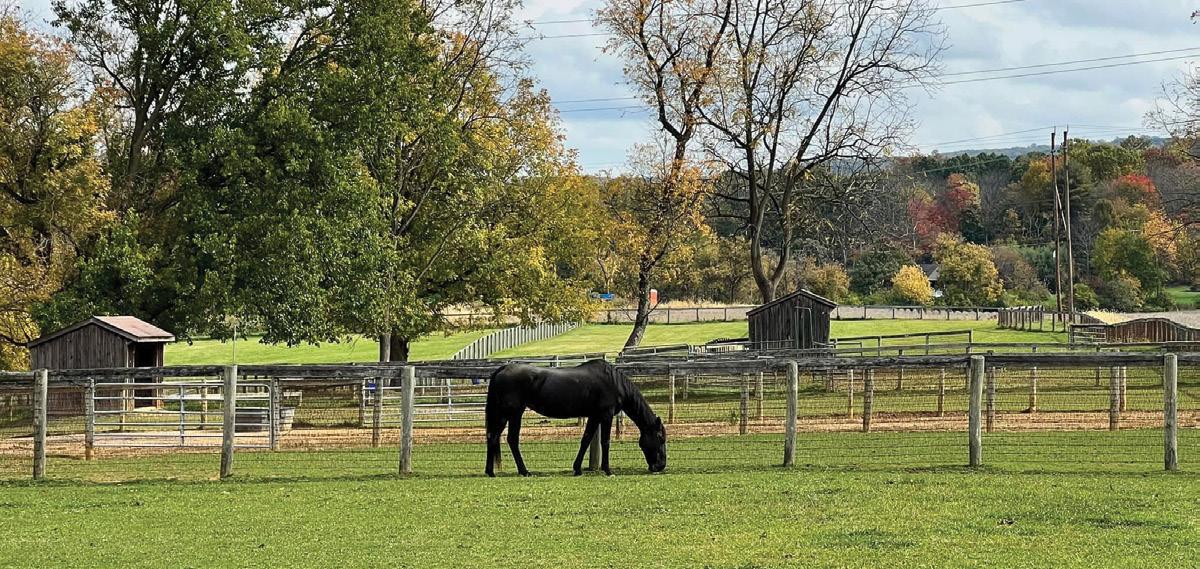
“I find that they are very forgiving ,” she says. “It amazes me that they can be after the horrible things that have been done to them. Sometimes the horses will ‘pick their people’ and that is who they will let work with them. Usually, when we take in a new horse that has been abused or neglected, I will start working with them by myself and try to get a feel for what they are like and give them time to adjust and settle in.”
Mylestone’s resident veterinarian
is Dr. Mary Beth Hamorski of Califon Animal Hospital. Hamorski has been with the rescue group since its early days , and she typically stops by several times per month to service the animals. This may mean sedating the horses for the farrier to be able to trim their hooves or to treat ongoing medical issues or emergency visits.
While the newly arrived horses at Mylestone quickly find medical relief and much needed care, most of them will never be ridable again. Thus, while some people do inquire about adoptable horses who can be ridden or trained, Thompson will typically direct them to another rescue group.
“Since all of our horses are special needs, they are not really considered adoptable,” she says. “You reach a point where you ask yourself, ‘How fair is it to the horse to move them after they have been with us for 10-plus years?’ Horses thrive on routine and moving can be stressful.”
Thompson is quick to point out that no horse at Mylestone will ever be euthanized because they are long-term residents and/ or will never be adoptable.
“Horses are only euthanized if they have serious medical complications like colic, severe injury, cancer, or their quality of life is greatly diminishing due to medical ailments ,” she says.
The horses that are the longest residents and will most likely never be


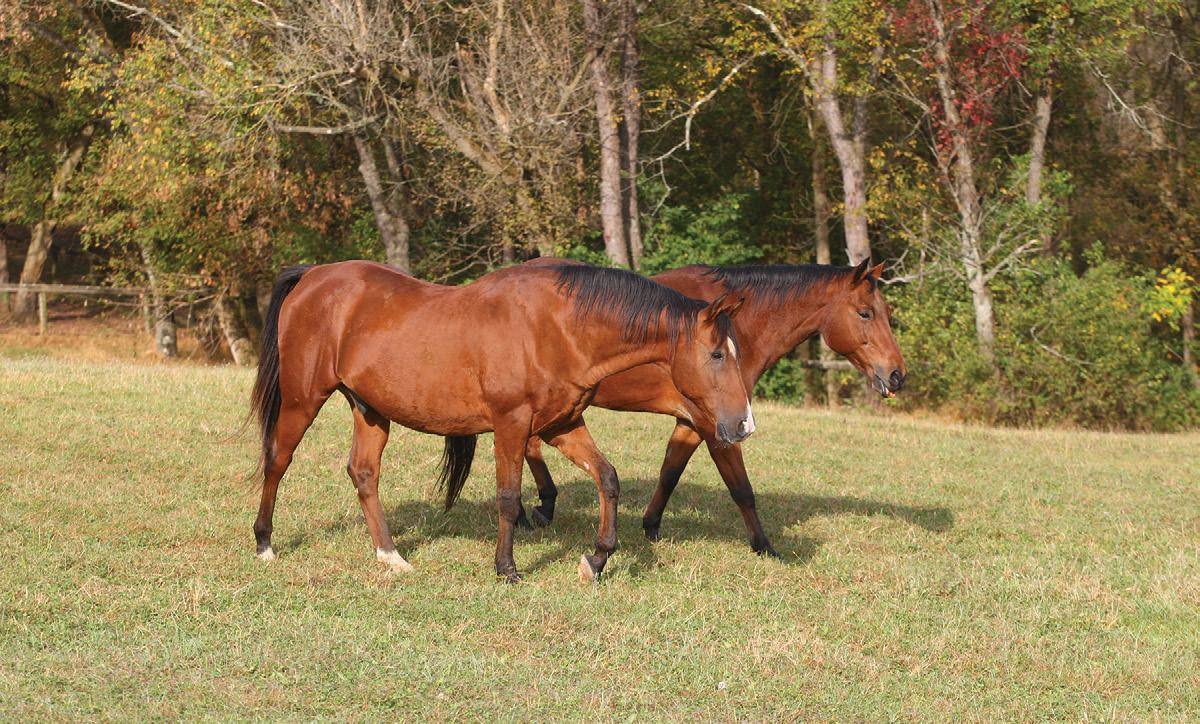


adopted out are referred to as “Sanctuary Horses , ” and these golden seniors are content to live out their final years at Mylestone with their horse friends and lots of treats.
Many people do not realize what a lifelong investment a horse really is. The average lifespan of a horse is 27 years, but they can live into their late twenties and thirties. Ponies typically live well into their thirties.

“It is so heartbreaking when people just want to dump their old horses,” says Thompson, who suggests that a provision for horses should be made in their owner’s will. Otherwise, these animals can fall through the cracks, causing them to be neglected and forgotten.
If someone identifies a horse that appears to be noticeably thin, ill , or in bad health, they can make a formal complaint through the New Jersey Department of Agriculture’s website at nj.gov/agriculture They may also contact the local police department and ask for animal control or the local humane officer to file a complaint.
With all the work that they do, Mylestone does maintain a collaborative relationship with other regional and national animal welfare organizations.
The Mylestone Equine Relief Fund was established to provide emergency support for horses in need by partnering with humane authorities, veterinarians, and nonprofit rescue groups that are registered charities. To learn more or to donate online, visit mylestone.org/the-equinerelief-fund.
Mylestone also works with Fleet of Angels, which provides micro grants for hay and grain in areas of the U.S. that have been hit by drought and wildfires. Fleet of Angels is the recipient of the ASPCA Equine Welfare Award. For more information, visit fleetofangels.org.

Mylestone is a private farm and cannot accommodate unscheduled visitors, but visitors are welcome to schedule a tour by calling 908.995.9300 or by filling out a request form at mylestone.org/contact.
Thompson says that guests are generally initially struck by how peaceful the farm setting and the horses are. “We work very hard to meet all their [the horses’] needs, day in and day out,” she says. “Their breakfast starts at 5 a.m. and their last meal is at about 8 p.m. They are fed four times per day.” Tours generally coincide with feeding times so that guests can interact with these majestic animals.
Mylestone Equine Rescue is run
with the help of trusted and dedicated volunteers , and they are always looking for new applicants. Potential volunteers must be 18 years of age or older and prior horse experience is preferred (though not required). Volunteers must be able to commit to one day of work per week at the farm, and labor is involved such as picking paddocks and mucking stalls. “If you love the outdoors and horses, this could be a great volunteer opportunity for you,” says Thompson.
As a nonprofit organization, Mylestone does not receive funding from the state or government agencies. Monetary donations are a significant help and can be made through Mylestone’s website at mylestone.org/how-to-help. Gift cards from Horseman’s Outlet in Lebanon (horsemensoutletnj.com) are also welcomed as Mylestone buys most of their horse supplies there.
To stay in touch with Mylestone Equine Rescue, follow them on Instagram at @mylestoneequinerescue where Thompson and the other workers like to post daily horse photos. You are sure to be charmed by these equine faces and their heart-touching stories!


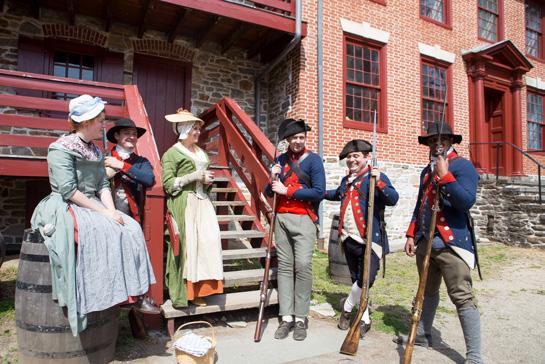

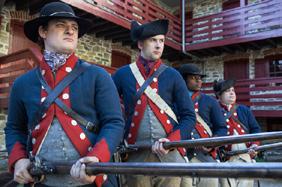







Relax + sip at one of 7 vineyards


ride or hike paddle + tube enjoy the views from a hot air balloon enjoy a fresh meal at a farm to table restaurant stroll an historic main street explore acres of farms +kid around with a goat!








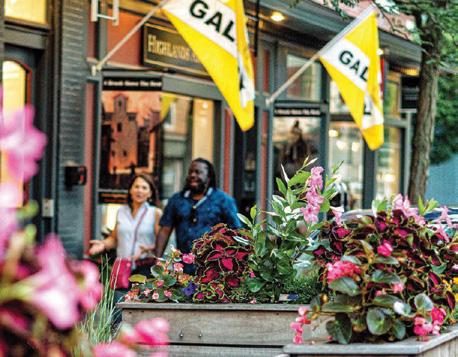



Libraries, like most other organizations, have seen a decade adapting to new technology, to shutting down completely in the pandemic, taking on new community roles, and reopening, some with changes. Through it all, librarians have been steadfast leaders of their staffs and captains of their physical spaces.
An article in Humanities, the magazine of the National Endowment for the Humanities, notes that in a 2011-2016 Pew study of public libraries, “researchers found that trust in librarians remained high because of their proven ability to curate and share reliable knowledge.”
Thirty-three days after Jennifer Podolsky started as the Princeton Public Library’s executive director in 2020, she had to close the building.
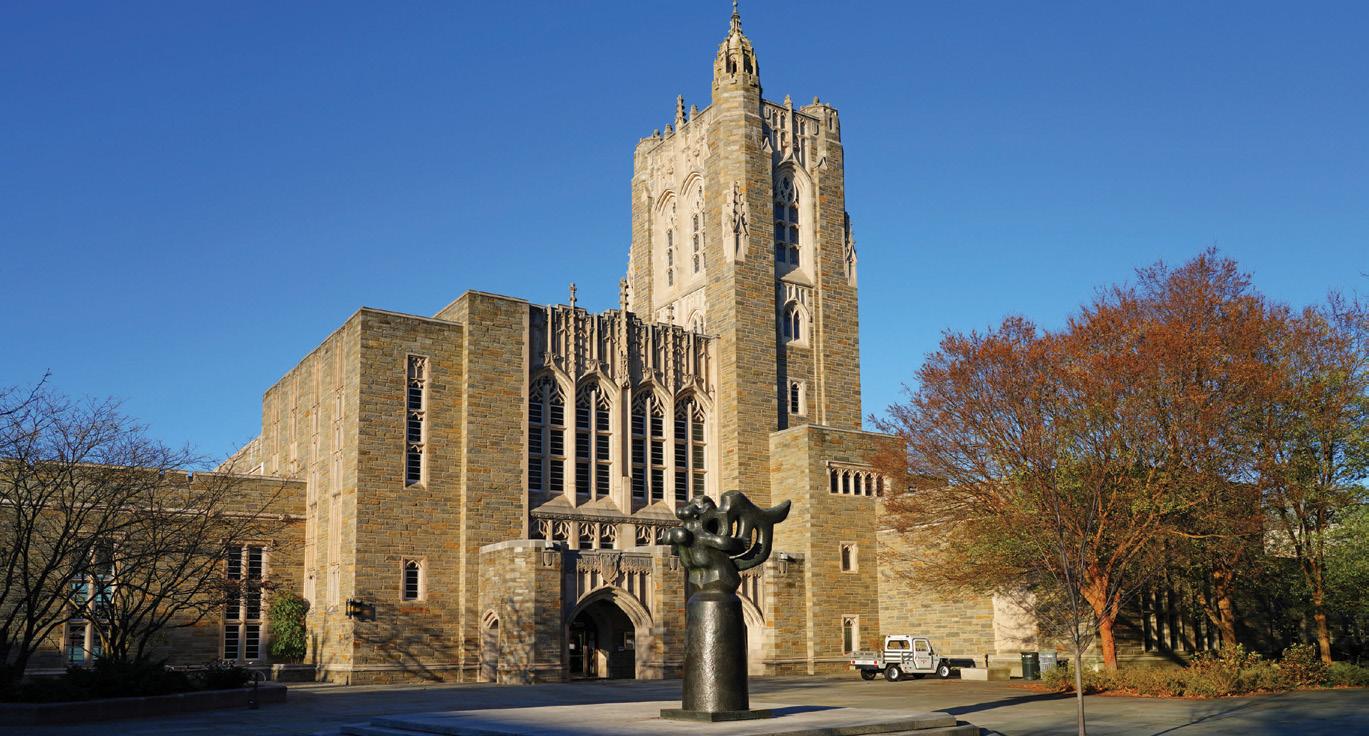
“The world changed that week, and suddenly the story of 2020 for Princeton Public Library would be how we adapted
to that change,” Podolsky recalls. “The library reinvented itself on the fly, finding new ways to serve its customers, and the greater Princeton community, while its physical space and collection were offlimits.”
But during that time, people realized “the library is more than just a building and physical objects,” she says. “It is about a dedicated staff, delivering all kinds of resources to help people realize their dreams.”
For Anne Jarvis, head of the Princeton University Library, “each day brought new challenges, but my colleagues stepped up to find innovative ways to provide library services and ensure access to our collections for teaching, learning, and research. It was both exhausting and exhilarating.”
With a history of being visible, and suddenly invisible, says Consuella Askew, Rutgers University librarian, “the pandemic forced many higher education
institutions and their libraries to pivot to remote learning and service delivery.
“Academic libraries have been aware for some time of the changes in how students are using our spaces. We have conducted space usage studies to inform space programming to accommodate these changes. However, COVID added another wrinkle to this rather straightforward approach. When libraries were closed during the pandemic, we had to find another way to support the ways our students study. We did so by creating a fourth space and providing a preponderance of library resources and many of our services online. We are now balancing our delivery of resources and services between these virtual and physical spaces.”
The theme of this year’s National Library Week (April 23-29) was “There’s More to the Story.” Here some of the area’s librarians reflect on their careers, and recommend a few books, as they show that there is indeed more to the story.
As university librarian at Princeton University Library since 2016, Anne Jarvis oversees one of the world’s foremost research libraries, consisting of the Harvey S. Firestone Library and nine branch libraries. She came from the University of Cambridge, England, where she worked as deputy librarian and university librarian — the first female university librarian in Cambridge’s 800year history.

A native of Ireland, Jarvis holds a bachelor’s degree in history from Trinity College Dublin, a postgraduate
diploma in library and information studies from University College Dublin, a master’s degree in communication and cultural studies from Dublin City University, and a Master of Arts from the University of Cambridge.
“The major difference really is the longevity of the three extraordinary world-renowned libraries where I have been really fortunate to work: The Library of Trinity College Dublin (Ireland), Cambridge University Library (England), and more recently here at Princeton University Library,” says Jarvis. “Cambridge University dates back to 1209 and Trinity College Dublin was established by royal charter in 1592. Princeton is the youngster, having received its charter in 1746. While each library is unique in terms of its history and distinctive collections, more significant are their shared values, their commitment to great national and international scholarship, the democratization of information, service-ethos, and international reputations.”
“I have always loved libraries and what they stand for. As a child, my Saturdays were spent at the local public library in Ireland — a place where I could explore new interests within the covers of the physical books. I also remember the multiple volumes of Encyclopaedia Britannica arriving at our home with my mother saying to me and my brothers that we could now look up everything we wanted to know. It was an ‘Aladdin’s cave’ of information, the internet of the time. Having completed my BA in history
at Trinity College Dublin, that involved constantly researching issues that I found interesting — doing the same work for other people seemed a natural progression. I was also fortunate to get an internship working in a special library in Dublin which gave me an insight into the many aspects of librarianship before I returned to college to get my master’s in library and information science.
“What I love about the profession is its focus on people. We connect with people and then we connect them with the information they are seeking or perhaps did not even know existed, in whatever format is available. Our daily working lives are about helping them discover, access, and use information to make informed decisions. This has always felt a uniquely important and rewarding role.”
“I come from a country of great writers and poets, so I make no apology for choosing three Irish authors,” says Jarvis. We Don’t Know Ourselves by Fintan O’Toole: “A brilliant account of the extraordinary social and cultural transformation of Ireland since the 1950s.”
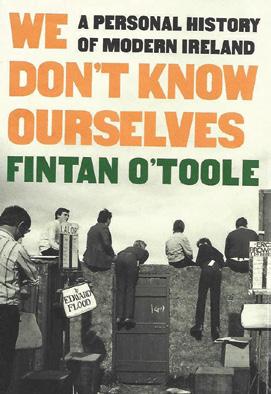
Small Things Like These by Claire Keegan: “A remarkable exploration of secrecy and moral courage in small-town Ireland.”

Nora Webster by Colm Tóibín: “An exquisitely-observed character portrait set in the County Wexford countryside of his youth.”

Consuella Askew has a history of successfully guiding libraries through transformational change. She has published and presented on library leadership, developing a culture of assessment in academic libraries, and adapting library services to meet evolving user needs. In her previous role as associate university librarian at Rutgers University – Newark, she led the library through a multimillion-dollar renovation and an organizational restructuring, and was instrumental in bringing the Truth, Racial Healing and Transformation Center to Rutgers-Newark.
Askew is an active contributor to the academic library profession, serving on the executive board of the Historically Black College and University Libraries Alliance and other advisory groups. She was an associate dean for public services at Florida International University, where she earned a doctoral degree in higher education. Askew holds a bachelor’s degree in English from Spelman College and a master’s degree in library and information studies from the University of North Carolina.

“As I look back over my 30-year career in librarianship, I realize that during this period I have been a part of perhaps the greatest evolution and proliferation of information and information technologies that took place during the 20th and 21st centuries,” says Askew. “The availability and adoption of the internet in the field of education, new mobile technologies, and the impact of COVID all contributed to changing the way by which library work is conducted, where the work happens, and how our spaces are used.
“When I was in library school, we used the old-fashioned dial-up handset combination to access electronic databases for our course assignments. One particular database (Dialog) was so expensive to use that students were not allowed to access it on their own. It was during my first professional job in the early-mid ’90s, as a school librarian for a public school system in North Carolina, when I was first introduced to the ‘North Carolina Information Highway,’ better known then as the World Wide Web, along with Alta Vista, the popular internet search engine at the time. My second professional position in an academic library was where I was introduced to databases on compact discs (CDs). Today, libraries provide access
to these legacy databases, e-books, and streaming media seamlessly via the web; the internet is ubiquitous; and ‘google’ is an action verb.”
“As the inaugural chief librarian and solo librarian for the Graduate School of Journalism, City University of New York (CUNY), now known as the Craig Newmark Graduate School of Journalism, I had the rare career opportunity to develop a library from blueprint to construction,” says Askew. “I was brought on board along with other key administrators for the school before it officially opened its doors. This opportunity afforded me the experience of creating a library from scratch. I developed policies and procedures, provided content, designed the library website, and selected collection materials. I also worked with the architect and design firm to complete the design of the space and select the furniture and security equipment, as well as other design features for the new library space. When we finally moved into the new space, I worked closely with the CUNY central library services division to set up our instance of the integrated library system, set up services such as circulation and ILL (interlibrary loan), establish new database subscriptions, and catalog and process its physical collections.
“I learned a lot from that experience, and thus far it remains the highlight of my career.”
Leading with Compassion: How to Make Leadership Authentic by Managing with Integrity by Gregory E. Worden.

The Six-Step Guide to Library Worker Engagement by Elaina Norlin.

Jenifer Gundry holds a bachelor’s degree in English, a master’s degree in English, a master’s degree in library science, and a Ph.D. in history. She was a reference librarian at Bucks County Community College before joining the Seminary staff.

“My area of interest is broadly described as book history but is inclusive of all kinds of fascinating issues, such as the histories of print and digital
publishing, authorship, reading, libraries, censorship, the rare book trade, and much more,” says Gundry. “Book history is an interesting leaping-off point, providing a wonderfully flexible framework for yoking together all kinds of disparate topics and methodological approaches. My research agenda at the moment focuses on the histories metadata and collaborative digital projects, the reception of early 20th century absurdist poetry, and the evolution of linguistic forensics.”
“The coming decade will see libraries continue to provide innovative access to — and digital and physical spaces to engage with — content collections, ideas, networks, and programming,” she says. “It’s also exciting to think about how libraries will morph to meet changing needs. One change we can expect is a reimaging of the relationship between patrons and libraries. If the future will be characterized by continually shifting educational models and a multiplicity of avenues for credentialing, certification, and autodidacticism inside and outside traditional colleges and universities, academic communities will be serving more people, differently. The academy will need to redefine pathways, roles, and services for new types of formal and informal institutional affiliation. This creates a lot of room for libraries to think about new patron relationships in terms of shared responsibility and active collaboration, potentially impacting collecting, preservation, and access.
“And, librarians will continue to communicate, to each generation, the message that research is not solely transactional and task-oriented. Research is a fine art: a joyful, creative endeavor, informed by skill and multi-dimensional imagining across a lifetime.”
Gundry says, “I love reading widely outside of my profession, scouting for ideas and perspectives that could be brought into librarianship. It is fascinating to learn how other spheres of work wrestle with big issues like formation and meaning.”
Her current topics (stand-up comedy, emergency medicine, and disaster planning) may seem unconnected, she says, but “all are high-stakes, fast-moving fields that require superior facility with both the outrageous and the human heart.”
A Cultural History of Comedy in the Modern Age, edited by Louise Peacock.

When the Dust Settles: Stories of Love, Loss and Hope from an Expert in Disaster by Lucy Easthope.

Life in the Balance: A Doctor’s Stories of Intensive Care by Jim Down.
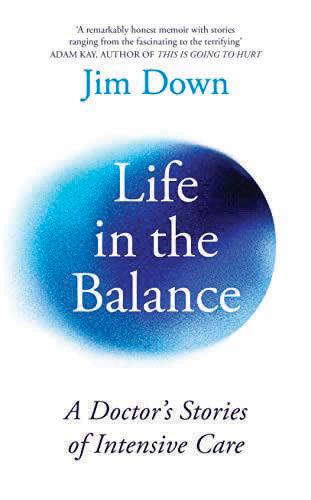
With a Ph.D. in educational psychology from the University of Virginia, Dana Sheridan’s academic career focused on how children learn in informal, out-of-school environments. Her professional passion has been the design of dynamic hands-on programs for children. She has designed programs for patients at UVA Children’s Hospital, developed tours for the Albert and Shirley Small Special Collections Library, and coordinated programs at the Virginia Discovery Museum and Pop Goes the Page (popgoesthepage.princeton.edu).
“Our Pop Goes the Page blog began in 2013,” says Sheridan. “It was the direct result of parents, caregivers, teachers, and youth services librarians asking us how we produced such creative story time projects. So we started posting step-bystep instructions, templates, supply lists, the works! As time passed, we expanded the posts to include our other programs, large-scale events, interviews, product tests, site visits — really anything that has a literacy connection, even an unusual one. Our mission is to spread creative literacy and library love.”
“Visitors to the Cotsen gallery will quickly see that it’s a fantastical landscape with a giant reading tree, comfortable couches, and a wishing well,” says Sheridan. “It’s meant to immerse you in an engaging and imaginative world, much like books. In this space dedicated to young readers, it’s our hope that they feel welcome, inspired, and validated in a library that was created exclusively for them. We have college students return to Cotsen
and tell us how much it meant to them, growing up. Some even make it a special stop on cross-country trips. It’s magic.
“Currently, we have two in-person programs: Bookscape Babies, our baby social hour for children 0-2 on Tuesdays at 11 a.m.; and Tiger Tales, our creative story time for children ages 3-5 on Fridays at 11 a.m. We also offer virtual programs that include five amazing escape rooms, a writing feedback program for children and teens, a primary source education resource for teachers, and this winter we launched Tolo , our first digital chooseyour-own-path book. All of our programs are open to the public and free of charge.”
“The focus of both my master’s and Ph.D. were on individual differences in learning and how children learn in free choice, informal learning environments like libraries, museums, and community centers,” says Sheridan. “In
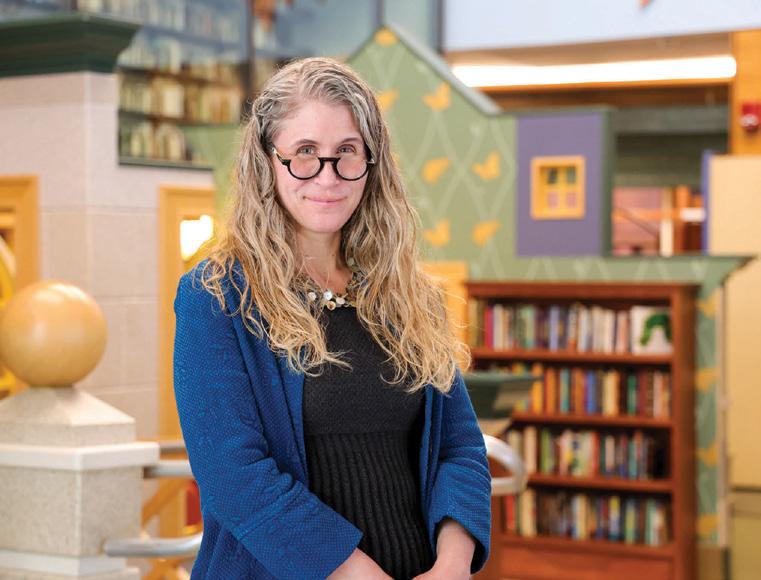
many ways, I’m both librarian and museum educator, specializing in literacy, collections education, and intellectual discovery. I’m also an artist and a writer. I bring all that expertise to my work at Cotsen, which runs the full gamut of designing hands-on projects for kids, to interviewing children’s authors, to educating with our special collections, to working with young writers to develop their voices. I’ll also add that for me, literacy education encompasses both fiction and non-fiction, and all disciplines and topics. Art, science, history, mathematics, humanities — I research and develop programs from every angle, always mindful to keep it learner-centered and engaging.”
Cotsen has a webcast/podcast, BiblioFiles, in which Sheridan interviews children’s authors and graphic novelists “All of those books are amazing and highly recommended,” she says.
A Wrinkle in Time by Madeline L’Engle: “A childhood favorite and hugely impactful.”

When You Reach Me by Rebecca Stead: “For its connection to my childhood favorite and best plot twist. EVER.”
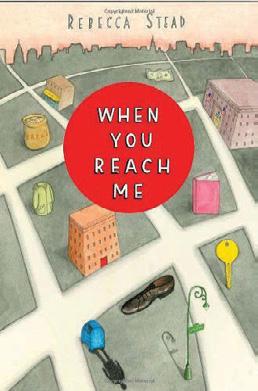
Constantia Constantinou has been a pioneer in developing digital, multimedia, and technology initiatives in large university library systems and in advancing partnerships among libraries, museums, and universities. As vice provost and director of libraries at Penn, Constantinou developed and launched a strategic plan for 20202025 — with an emphasis on delivering collections and services at point of need, anytime, anywhere — which carried Penn libraries through the pandemic. Under Constantinou’s leadership, the Penn libraries added distinctive collections to its holdings and embarked on partnerships, most recently the acquisition of the archives of The Philadelphia Orchestra
and the Academy of Music, providing public access to materials that document nearly 175 years of Philadelphia’s rich musical history. Before coming to Penn, Constantinou was dean of University Libraries and SUNY Distinguished Librarian at SUNY-Stony Brook and was the director of the Luce Library at SUNYMaritime College. She began her career at New York University and has brought her focus on digital and multimedia technology to leadership positions at several other academic libraries.

She is an accomplished classical guitarist, who studied at the Royal School of Music in London before earning a bachelor’s degree in music and a master’s degree in music theory from Queens College of the City University of New York, where she also earned her Master of Library Science.
“Musicians tend to be very organized, disciplined, and methodical; they bring order to sound in order to make and perform music, in much the same way as librarians bring order to library collections in order to facilitate the discovery of knowledge,” says Constantinou. “My training as a musician taught me how to animate a set of basic building blocks — tone, rhythm, dynamics — to achieve something that moves audiences. Practicing librarianship is very similar: at its core, my role is to empower my expert staff to activate our distinctive
collections and dynamic resources in order to inspire creative inquiry and critical expression in our audience of students and scholars.
“I discovered librarianship and libraries as a music student at Queens College of the City University of New York. I started working in the music library as a workstudy student. The head of the music library, Dr. Joseph Ponte, became my mentor, opening my world to librarianship. It was here that I experienced the power and impact that the library has — in the life of students, in the life of the community that we serve, in the success that we bring to the university, and to the faculty and to research. Music is wonderful to have in my life. But librarianship is my chosen profession.”
David Copperfield by Charles Dickens, “my very first book given to me by the Red Cross at the age of 10 in a refugee camp.”
Metamorphoses by the Roman poet Ovid. Leaves of Grass by Walt Whitman. Odyssey by Homer.

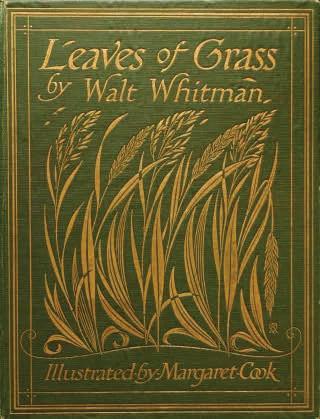
Captain Michalis by Nikos Kazantzakis. The poems of Constantine Cavafy, found in several translated volumes.

Librarian for Modern and Contemporary Special Collections, Firestone Library Princeton University
Before joining Princeton in 2021, Jennifer Garcon was at the University of Pennsylvania, first as the Council on Library and Information Resources’ Bollinger Fellow in Public and Community Data Curation, and later as digital scholarship librarian. She began her career as collection development specialist at History Miami Museum, and was soon promoted to assistant curator, where she curated archival exhibits that responded to current social and political issues. Simultaneously, she was a research associate for the Radio Preservation Taskforce at the Library of Congress. In advancing her work more broadly, she has implemented the archiving process and practices as a steering committee member of Archives for Black Lives in Philadelphia. Garcon earned her master’s degree at Hunter College and her Ph.D. in history at the University of Miami, where her dissertation, “Haiti’s Resistant Press in the Age of Jean-Claude Duvalier, 1971–1986,” explored the role of the oppositional news media in the overthrow of a long dictatorship.
“As the librarian for Modern and Contemporary Special Collections, I’m responsible for the curation and
care of 20th- and 21st-century special collection materials, including rare books, manuscripts, and born-digital material,” says Garcon. “My collection area is quite broad and varies geographically, encompassing everything from manuscripts within the Toni Morrison papers, rare editions of F. Scott Fitzgerald and James Baldwin, documents pertaining to the First and Second World Wars and the U.S. civil rights movement, to material chronicling international independence movements in Latin America and the Caribbean through literature and historical documents. A part of my charge is to strategically envision and develop Princeton’s research and teaching collections in ways that will, for decades and centuries to come, be the basis of historical inquiry about our contemporary moment.”
As co-curator of the recent exhibition “Toni Morrison: Sites of Memory,” with lead curator Professor Autumn Womack and Rene Boatman, Garcon says it, “focused on exploring Morrison’s creative process, thinking critically and carefully about the architecture underlying many of her best-known masterpieces.”

“I arrived to librarianship after a long and meandering career path, which thankfully enabled me to build varied expertise in a number of subject areas,” says Garcon. “I studied gender and Victorian literature as an undergraduate at Brown, and later earned advanced degrees in American literature, focused on antebellum print culture, and in global colonial history, focusing on age of revolution conflicts (think American, French, Haitian, and Mexican Revolutions). I received my Ph.D. in history, studying Cold War politics, dictatorship, and media. These multiple areas of expertise allow me to think expansively and critically about the kind of scholarly inquiry I might anticipate as I develop research and teaching collections. The interdisciplinary nature of my background also helps to highlight the intersections between multiple 20th-century flashpoints, meaning that the collection strengths are inevitably in conversation with one another, facilitating complex, multilayered inquiry that helps to both nuance and extend the research capacity of our collections.”

. Silencing the Past: Power and the Production of History by Michel-Rolph Trouillot.
Paper Cadavers: The Archives of Dictatorship in Guatemala by Kirsten Weld. Liberty’s Exiles: American Loyalists in the Revolutionary World by Maya Jasanoff.

Head, Marquand Library of Art and Archaeology
Princeton University
As director of the Marquand Library of Art and Archaeology, which is among the oldest and most comprehensive academic art libraries, Holly Hatheway focuses on collection development, digital projects, and administration. Previously, she held library leadership positions at University of California, Berkeley, and the Haas Arts Library at Yale University. She earned a dual Master of Science/Master of Library Science in Art History from Pratt Institute. Her research interests include graphic arts and publication design, political propaganda, and historiography of art. She has held similar positions at Yale and UC Berkeley.
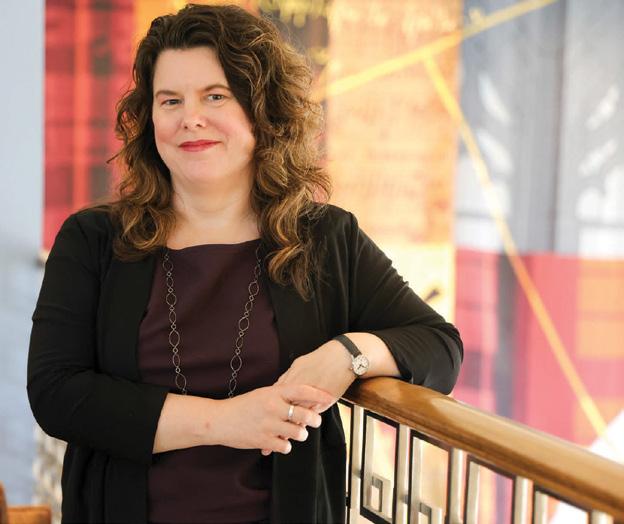
offerings. As a result, over the last 25 years I have had the pleasure to see collections around the world at a scale much greater than most who work in the arts — and that includes seeing my personal favorite areas of art and architecture too!”
“Due to my broad exposure to all areas of art history as a liaison to the Art and Archaeology Department at Princeton, and one who continually builds an art history library collection, participating in the art world is my job,” says Hatheway. “Going to art museums and galleries, visiting architectural sites, and visiting other art libraries around the world is a practice of lifelong learning that is pure joy. Conferences and professional development opportunities in my profession are always strategically held in places that offer opportunities to visit unique art and visual culture
“I studied studio art and art history as an undergraduate student and earned a master’s in art history,” says Hatheway. “Having a career that involved the visual arts was always my goal. I did not discover the option of art librarianship until well into working toward my art history master’s; and I then added on a second master’s in library and information science: MLS. Most of my art librarian colleagues also studied art history or studio art and it has been a wonderful experience working with this global group of colleagues for more than two decades. As a librarian I build collections and help students and faculty conduct research in the visual arts. This has allowed me to become more of a generalist art historian, as opposed to having a niche specialization. I am constantly exposed to the whole range of art history from cave paintings to contemporary art. It has proven to be an effective, and often fun, way to make use of an art history degree beyond teaching and art practice.”
Non-fiction art books: A Clearing in the Distance: Frederick
Law Olmsted and America in the Nineteenth Century by Witold Rybczynski. Ninth Street Women: Lee Krasner, Elaine De Kooning, Grace Hartigan, Joan Mitchell, and Helen Frankenthaler: Five Painters and the Movement That Changed Modern Art by Mary Gabriel.
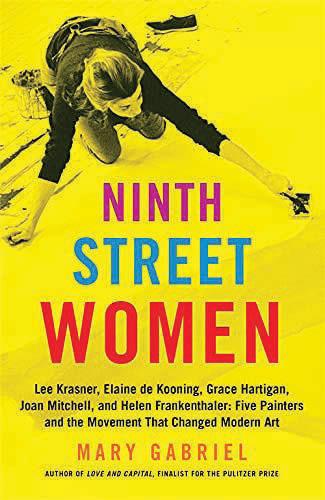
“And two delightful sequential novels that celebrate art provenance and horology,” says Hatheway, “ A Case of Curiosities and The Grand Complication by Allen Kurzweil.”


Theodore Sedgewick Wright Library
Princeton Theological Seminary
Having lectured at several universities, Jeremy Wallace holds a bachelor’s degree in anthropology and religious studies from University of Tennessee-Knoxville, a master’s degree in information from Rutgers University, and a Ph.D. from the Princeton Theological Seminary in late antique history.


“I am a lifelong reader and found the library to be a natural place for me to spend my time and to work while in graduate school,” says Wallace. “The more time I spent in libraries, the more I realized that I wanted to become a
librarian after graduation. I believe books can change our lives and our perspectives, and I hope to match our researchers with the resources that will help them to further their scholarship.
“I love the idea that the answers to many of our questions can be found hidden in a book somewhere, if only we can locate it. I enjoy the order, structure, and comfort of the library, and the way in which it can be a doorway to information and transformation.”
As I Lay Dying by William Faulkner. Água Viva by Clarice Lispector. The Book of Disquiet by Fernando Pessoa.


In Search of Lost Time by Marcel Proust.

F.W. “Chip” Dobbs-Allsopp’s research and teaching interests include the historical, philological, and literary study of biblical and ancient Near Eastern literature (with special focus on poetry, Northwest Semitic inscriptions) and exploring how new technologies can enhance the editing of ancient Semitic texts. A biblical scholar, epigrapher, and literary theorist, Dobbs-Allsopp has taught and written extensively on Semitic languages, the origins of alphabetic writing, biblical poetry, poetics, and literary criticism. He holds an M.Div. from the Princeton Theological Seminary, a Ph.D. from Johns Hopkins University, and a bachelor’s degree in history from Furman University. He served as a faculty member at Yale and visiting assistant professor in Ugaritic at the University of Pennsylvania. He is working on a monograph-length study of the poetry of Walt Whitman.
Dobbs-Allsopp has enjoyed exploring the benefits of new technologies. As he loses his sight from a degenerative disease, he has become increasingly dependent on technologies. Through membership in HathiTrust, the Seminary was able to provide the campus with electronic access to more than 150,000 volumes during the pandemic when Wright Library was closed. The library is digitizing copyrighted materials and making them available through the Theological Commons and has pioneered a small controlled digital lending collection.
JEREMY WALLACE Assistant Director for Research and Public Services F.W. “CHIP” DOBBS-ALLSOPP Princeton Theological Seminary Professor of Old Testament James Lenox Librarian“Happily, philology is full of small and large ‘aha’ moments — one of the chief benefits of reading closely and in slow motion,” says Dobbs-Allsopp. “One example: Some years ago, I had a running conversation with my colleague Gord Hamilton (he wrote the book on this topic) about the evolution and development of the early alphabet — the shapes of the letters, their stances, the reduction in the number of letters to 22, etc. One of the insights that resulted from the discovery of what would turn out to be two of our earliest alphabetic inscriptions from the Wadi el-Hol (1850 BCE) was the importance of Egyptian hieratic (the cursive form of writing Egyptian on papyrus) alongside Egyptian hieroglyphs for understanding these questions — for most of the 20th century scholarly focus was only on the latter. It suddenly dawned on me that the reason that the linear alphabet in the eastern Mediterranean (Phoenician, Hebrew, Aramaic) was written right to left is because hieratic is written in that direction. Indeed, it was the only writing system at the time that wrote consistently in that direction. I asked Gord if anybody had noted this before. After a few days he got back to me and said no he didn’t think so, but he believed it was obviously true. It took me some time to pull the evidence together and it will appear in a forthcoming article. But the ‘aha’ happened because we started thinking about alphabetic origins with hieratic in mind. Not brilliant, but pretty cool!”
“As a textual scholar, I am keenly aware of how indebted we are to ancient scribes for much of our knowledge of the ancient
world,” says DobbsAllsopp. “They collected this knowledge, wrote it down in durable materials, copied and recopied it, thereby preserving it and transmitting it to future generations — and ultimately to us. Scholars like to think of themselves as modern day scribes. And in the creation of knowledge, we are like ancient scribes. But most of the other work that ancient scribes did is more analogous to the work of professional librarians. Collecting, preserving, and disseminating knowledge is at the heart of what modern academic libraries are all about. This requires skills and expertise that only professionallytrained librarians have. Ensuring that what we know today will benefit future generations will depend in large part how well we support our libraries and librarians.”
Dobbs-Allsopp’s most recent book, On Biblical Poetry, is a collection of five essays on different aspects of biblical poetry.

“I get into the second chapter of that book, which makes the case for a free-verse analysis of biblical poetic rhythm, via Walt Whitman, that icon of American free verse,” he says. “And Whitman becomes the subject of my forthcoming book, Divine Style: Walt
Whitman and the King James Bible. The book focuses on the style of the early Whitman (the Whitman of the first three editions of Leaves of Grass) and its debt to the King James Bible,” he says. “I ultimately inherited my love for Whitman though my mom who was an English professor. But my love for the poet was rekindled during my graduate student days, I was just beginning to read biblical poetry seriously. I picked up a used edition of Leaves and immediately began appreciating Whitman’s biblical sensibilities.”
“On biblical poetry, see Elaine James’ incisive and deliciously written An Invitation to Biblical Poetry,” says Dobbs-Allsopp. “There is more poetry available to American readers than ever before in history and I urge everybody to take advantage and start reading more poetry. There may be no better place to start than with the current poet laureate Ada Limòn’s new collection, The Hurting Kind
“On the ongoing political relevance of Walt Whitman, see Mark Edmundson’s Song of Ourselves.

“The Gilgamesh epic is the ancient world’s greatest literary work. Check it out in the new translation by Sophus Helle.

“If narrative is more your thing, try longtime Princeton resident Laura Spence-Ash’s debut novel, Beyond That, the Sea — exquisite sentences, character-driven, and embedded dialogue, a stylistic trait that goes all the way back to the beginning of modern English prose and the first English translation of the Bible from the original Hebrew and Greek of William Tyndall.
“For a taste of the future of the printed word, check out Denis Diderot’s Rameau’s Nephew — Le Neveu de Rameau: A Multi-Media Bilingual Edition, edited by Marian Hobson.”

Jennifer Podolsky is formerly the project specialist for business and technology outreach at the New Jersey State Library. She has served in management, research, and editorial positions in both publishing and libraries. She has also worked as a youth services librarian for the Somerset County Library System and was a volunteer research librarian for the archives department of the Ellis Island Immigration Museum. She holds a bachelor’s degree in English literature and anthropology and a master’s degree in library and information science, both from Rutgers University.
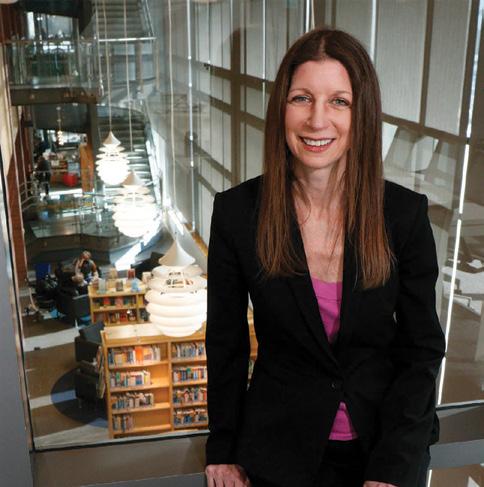
“I have had my nose in a book for as long as I can remember,” says Podolsky. “As a child and all the way into adulthood, I would visit libraries for fun and spend an inordinate amount of time in the stacks. There I most enjoyed wandering — looking for parts of the library that no one else seemed to pay attention to. I would pick books off the shelf randomly and just sit on the floor and read. At the time, working in a library never occurred to me — it was just a place to get lost. In college, I first studied English literature in the anticipation of becoming a classroom teacher. Halfway through my studies, however, I discovered a love of digging things up — specifically I became immersed in the field of archaeology. I double majored and after graduating was not at first
certain how my two loves — stories and research/exploration — would align until I decided to pursue my master’s degree in library and information science. It was then that I realized that digging for information was as interesting as digging in the dirt. The rest, as they say, is history.”
“You know, the more things change, the more they stay the same,” says Podolsky. “Despite concerns to the contrary, libraries have benefited greatly from the evolution of technology used for library service. Technology has allowed libraries to streamline and expand our services to make them more accessible to our users. What has changed is that the pandemic forced many libraries — and other industries — to fast-track plans to make their services available to users no matter where they are. What continues to evolve is the idea that libraries are also community centers — the heart of every community, in fact. As library staff, this is something we have always known. What is beautiful is that now everyone else is realizing that as well. In the next decade, the evolution of libraries as the center of the community will continue, and technology will be a part of what allows us to do so. So, this is something that still impresses me. Libraries are quite successful at what they do — and what we do best is to figure out what our community needs most, and work endlessly to provide those things for you, both in person and remotely.
“When you go to the library you are treated with a large variety of programs, services, materials, and spaces to use in a variety of ways.
If you want to stay home, we can also offer you the same thing — programs to enjoy from the comfort of home, materials that are accessible in
print or digital format, and if you need to borrow technology or tools to get something done at home, you can borrow it from our Library of Things. Evolving technology makes this all possible and we embrace it. In the end, we have something to offer no matter where you are. Library technology will continue to evolve with the goal of making the library more accessible and convenient for all, making a more seamless transition to use our services from anywhere. At the same time, that same evolution of technology makes accessing materials and services in our physical space that much easier. Offering more self-service opportunities, for example, frees up staff to do more meaningful work and interact with library visitors. Ensuring that borrowing and renewing materials is a simple process frees both the library user and staff from spending their time on tedious tasks, giving them more time to enjoy all that the library has to offer.”
“I love a good page-turning mystery. The Last Thing He Told Me by Laura Dave is one of those books that, once started, you can’t put down. I am further intrigued because it was recently turned into a television series. I like to compare novels to their serialized counterparts and see if they measure up. This story is set against the backdrop of the houseboat community in Sausalito, Calif. As someone who really adores Sausalito, this only adds to the novel’s appeal.”

An urgent read for all Americans: Poverty, By America by Matthew Desmond, a critically acclaimed, sweeping novel about hope, courage, and survival.

All the Light We Cannot See by Anthony Doerr.
Song of Solomon, Toni Morrison’s award-winning novel about the life of Macon “Milkman” Dead III.
One of the most buzzed about books among our library visitors: All the Beauty in the World: The Metropolitan Museum of Art and Me by Patrick Bringley.

I cannot say enough wonderful things about our experience with Brandywine Living Serenade at Princeton. My dad moved in six months ago and has been so happy. Every member of the sta has been welcoming, kind and professional - my dad has been treated with genuine care and respect. e environment is beautiful – from the movie theater to the pub to the gorgeous dining room with chef-prepared meals, plus numerous activities –it’s all lovely. Each resident has his or her own apartment furnished with their own belongings, so it really feels like home. And knowing that there is a nurse available on site at all times gives us enormous peace of mind. I highly recommend Serenade – it is everything we had hoped for and more.
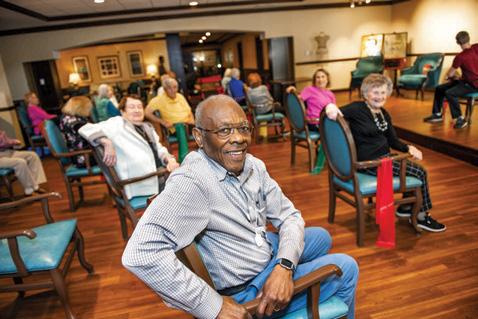
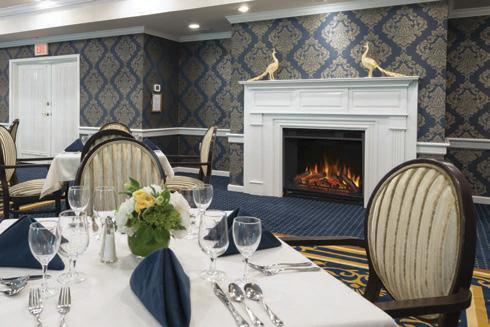
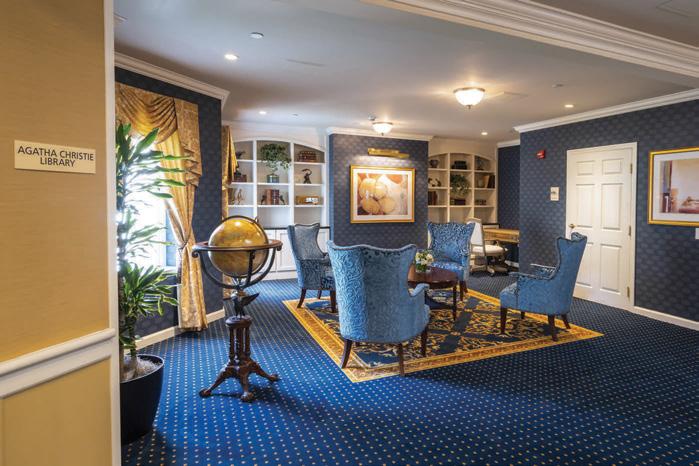

ank you,Mary M.


















 BY DONALD H. SANBORN III
BY DONALD H. SANBORN III
Born and raised in Princeton, composer Sarah Kirkland Snider writes music that The New Yorker has described as “genre-erasing.” Her website describes her music as an organic synthesis of a “diversity of influences to render a nuanced command of immersive storytelling.”

Her works have been commissioned and/or performed by the New York Philharmonic, the Birmingham Royal Ballet, and soprano Renée Fleming. The Washington Post named Snider one of the Top 35 Female Composers in Classical Music in 2019. Elsewhere, she has been cited by critics as “a significant figure on the American music landscape,” an “important representative of 21st century trends in composition,” and “one of the decade’s more gifted, up-and-coming modern classical composers.”
Snider is married to composer Steven Mackey. The couple live in Princeton with their son Jasper, 14, and daughter Dylan, 12.
Mackey was born in Frankfurt, Germany, and raised in northern
California. Since 1985 he has taught at Princeton University, where he is the William Shubael Conant Professor of Music. The University website notes that his “passion was playing the electric guitar in rock bands based in northern California. He blazed a trail in the 1980s and 90s by
work has been performed by ensembles such as the Kronos Quartet, the Los Angeles Philharmonic, and the Academy of St Martin in the Fields. Accolades include the Kennedy Center Friedheim Award, an award in music composition from the American Academy and Institute for Arts and Letters, and a Grammy Award for Best Small Ensemble Performance.

including the electric guitar and vernacular music influence in his concert music and he regularly performs his own work.”
He has been composer in residence at Curtis Institute of Music (2014-15). His
“For the first 20 years of my life, I was a blues/rock electric guitar player,” Mackey recalls, adding that when he was in college, a weekend visit to his older brother led to an unexpected discovery. “He put in this Beethoven tape; it was a scherzo from the last string quartet. As a blues guitar player, I was already in search of the ‘right’ wrong note — the ‘blue’ note that made you squirm, like the great blues guitar players like Buddy Guy or Jimi Hendrix.”
Mackey continues, “The movement begins with a sing-song-y little tune, and then it hits this E-flat. [The movement
is in F major, a key in which E-flat does not belong.] The rhythm breaks down — everything breaks down in this tune. I almost fell out of the seat — it hit me so hard.”
He adds that at the time he felt a growing ambivalence about life as a rock performer — being asked to play other artists’ hits instead of his own material — and this “coincided with discovering this music that was intended to distill all of life into a listening experience. I said, ‘That’s what I want to do!’”
Asked when she knew that she wanted to be a composer, Snider says, “I think that as a woman, you’re going to have a different experience. Growing up before the internet, I didn’t know that there were female composers. So, I didn’t really think of it as a career option until much later. But I remember feeling my initial connection to music — feeling like music was the place in life where I felt the most myself — as a young kid, maybe in kindergarten.”
Snider continues that, growing up in Princeton, “I would walk for 15 minutes to and from school by myself, and during those walks I would have these fantastical
musical excursions in my head.”
She remembers being inspired by film scores, and orchestral music that accompanied Tom and Jerry cartoons.

“But I think it would be a number of years later before I thought it could be a career option for me,” Snider continues.
I was a paralegal in New York for three years, before I had my first composition lesson, at the age of 25.”
Snider and Mackey met “on a subway platform — just chatting after a concert,” Snider recounts. She was perusing the program for a concert at Lincoln Center, given by percussionist Evelyn Glennie. “Steve was coming from Merkin Hall; he had been to see something else.” But Mackey had known that the Glennie event featured the music of composer Michael Daugherty, whom he was often compared at the time. “So, he felt this sort of quasicompetitive interest in what I thought of this piece,” says Snider.
Mackey interjects, “In fact, she didn’t even think of majoring in music in college.” Snider confirms this: “I majored in psychology and sociology. I thought I was going to go into some kind of social work, or public sector legal work. In fact,
As the conversation ensued, Snider discovered that she was talking to Mackey, whose music she knew and admired. “So, I was like, ‘You teach at Princeton; I’m from Princeton!’” she says. “We continued talking from there.”
Mackey adds, “I was on the board of the Princeton Symphony, and her parents were on the board.” At the suggestion of

her mother, Snider consulted Mackey about possible graduate schools. “Sarah was interested in pursuing composition, but having not majored in music she didn’t have any former teachers that she could go to,” Mackey explains. “That was 20 years ago.”

Snider reflects, “We saw eye to eye about music, and about life and the world. We both grew up loving rock and pop music. While I never played in a band, I was obsessed, in my 20s, with going to indie rock performances. So I would be writing a string quartet during the day, and going to see all these bands in New York at night.
It felt like living a double life, and Steve felt the same way about repressing his rock background in his early years as a 12-tone composer.”
The couple bonded over a mutual desire for a musical climate in which they felt that they were free to explore all of their musical interests in their compositions, without self-censorship. “I think we both figured out how to do that in our music, over time. But we inspired one another to push for greater honesty in our music,” says Snider.
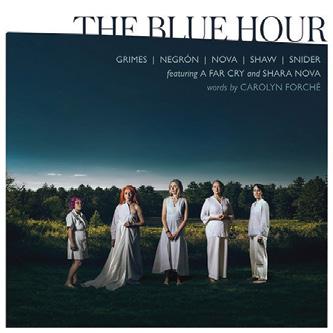
Asked whether Mackey and Snider influence each other’s compositions, both composers simultaneously answer, “Absolutely.”
something for me and I’ll go, ‘That sounds a little like Mackey!’ And she’ll listen to something that I’m writing and remark, ‘There’s a little bit of me in that line!’”
Snider says, “We have become, in some ways, each other’s ideal listener. It’s like having the benefit of a composition teacher, but so much richer because there’s a sense of equality and mutual respect between us that’s wonderful. It has been a cornerstone of our closeness over the years — this shared musical dialogue.”
Asked whether Jasper and Dylan are musically inclined, Snider replies, “They are, in fact. When the kids were young, we thought, ‘We’ll expose them to music, and suggest that they study an instrument. But we’re not going to put too much pressure on them, because they have two professional composers for parents.’”
Snider considers the “day-to-day aspect of playing our music for each other. When we’re composing, we share a lot of our MIDI files with each other. We’ll listen and discuss what we’ve written that day.”
Mackey interjects, “She’ll play
“They’ve each gravitated to music on their own,” she adds. “We started our kids in violin; they didn’t want to do that. Jasper moved toward drums, and Dylan moved toward piano and singing (although she plays some drums, too). Now, Jasper is also an electric guitarist; he’s giving his dad a run for the money, I have to say!”
Mackey concurs.
Snider says that Dylan is “writing lots of music for piano.” Mackey adds, “She’ll sit down at the piano and say, ‘Give me a word.’ If I say ‘avalanche,’ then she’ll improvise on the word ‘avalanche’ — which is a very composer-ly thing to do.”
“There’s this wonderfully openhearted, direct quality that Steve has at times, which is earnest and heart-onits-sleeve,” Snider says when asked to describe Mackey’s compositional voice. “I’m thinking of Turn the Key, which he wrote for New World Symphony a few years ago. It has these tunes that are jubilant.”

Of her own compositional style, Snider says that her music often is described as “emotionally direct.”
She continues, “We’re here for so short a time, why not say something honestly and directly? I think my music tends to be quite lettered and contrapuntal — but stylistically, there’s quite a spectrum. Some of my pieces are to the classical side of my upbringing and experience (growing up playing in orchestras), and others are more to the indie rock side of my musical background. But I think all of my music aspires to tell a narrative, and I use whatever stylistic means seem the best equipped to tell that story. So I like working with a wide stylistic toolbox.”
Of Snider’s compositional style, Mackey says, “Beauty comes to mind. It’s contrapuntal, so it’s a complex interweaving of trajectories, and it’s hard to pull that off. She’s at the height of her powers now, so she’s pulling it off in the way that Bach pulls it off, with these overlapping lines. But at the same time, there’s a clear sense of line, character — as she says, narrative.” He offers that Snider’s work explores how “these musical characters interact and evolve.”
“Also, there’s always a beautiful, bittersweet quality to her music,” Mackey
adds, remarking that while his music often has “optimism and energy, her music has a bittersweet melancholy under the surface, which is beautiful.”
On August 5, Snider’s Something for the Dark will receive its Cleveland Orchestra premiere. Snider says that the work, which originally was commissioned by Detroit Symphony, is inspired by a poem by Philip Levine, and explores “resilience, hope, and renewal.”

A month later, Princeton Symphony Orchestra will open its 2023-2024 season on September 9 with Forward Into Light . According to Snider’s website, Forward Into Light is a “meditation on perseverance, bravery, and alliance. The piece was inspired by the American women suffragists,” though the piece “does not attempt to tell the story of the American women’s suffrage movement, but rather to distill the emotional and psychological contours of faith, doubt, and what it means to persevere.”
The titles Something for the Dark and Forward into Light suggest that the pieces are related, but Snider says that they are not.
“ Forward into Light was commissioned by the New York Philharmonic, as part of their Project 19 commissioning program, which was to celebrate the women’s suffrage centennial,” she explains. “They commissioned 19 female composers for chamber and orchestral pieces.”
“So, I wrote this 15-minute piece about the emotions that galvanize a person to endure all of the hardship that the suffragists endured in order to campaign
for their rights to vote,” Snider continues. “I think of the piece as an emotional trajectory about what it means to persevere . It’s my favorite orchestral piece that I’ve written so far. For me, it felt like a significant step forward, compositionally; I tried some new things, and had a lot of fun writing it. So I’m very excited to have the Princeton Symphony perform it!”
Currently, Snider is at work on an opera about Hildegard of Bingen, for which she is writing the libretto as well as the music. It will be conducted by Gabriel Crouch, conductor of the Princeton University Glee Club.

“Gabriel and I are going to be teaching a course on my opera in the fall, as part of the Lewis Center for the Arts’ Princeton Athelier program,” Snider says. “That will result in a workshop at the University.”
This past April, Mackey’s RIOT was presented at a New Jersey Symphony concert titled “Mozart & Steven Mackey.” Mackey explains that RIOT was “commissioned by the New Jersey Symphony to celebrate their 100th anniversary. The piece is a grand statement; since I sang the Berlioz Requiem in the college choir when I was an undergrad, I’ve wanted to write a piece with 200 people on stage. RIOT is my realization of that fantasy. You’ve got the University Glee Club; the New Jersey Symphony; and vocalist Alicia Olatuja, who can sing like a classical mezzo-soprano, or like a


















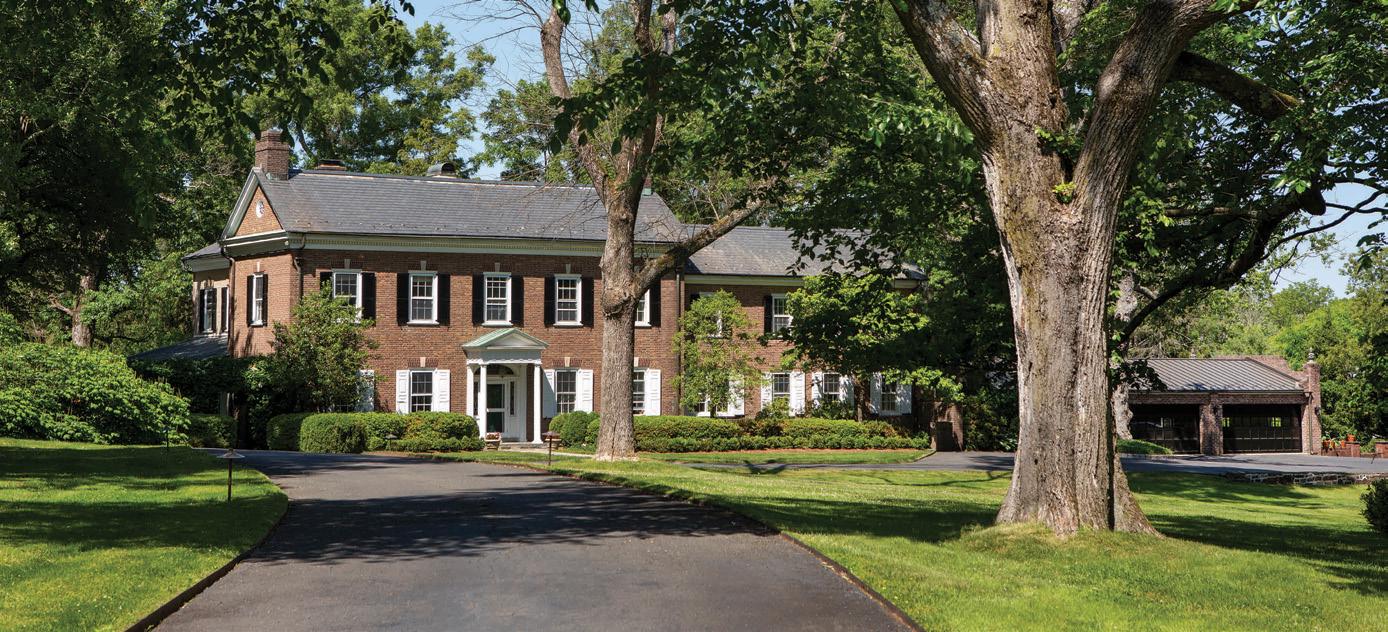
A true estate setting this close to town, nestled into the quietest corner of the Western Section, is simply unparalleled. Princetoneducated architect Rolf Bauhan designed this brick manor on rolling land named Lone Tree Farm. The bucolic atmosphere remains with sweeping front lawns, trickling fountains, an English garden and a pristine pool spread out on 3.43 acres. While this home is timeless in style and retains a trove of authentic original features, systems are state-of-the-art, and renovations include a custom kitchen, a
polished primary bath and lighting chosen by a designer with a keen eye for detail. Only the best was considered for the kitchen, where handmade inset cabinetry and seamless slabs of marble stand the test of time and an AGA induction range and full-sized refrigeration wow even the most ambitious cooks. The primary suite includes a dressing room between the custom closet and Calcutta marble bath with floating vanity and Waterworks fixtures. Mere words cannot capture all the magic to be found at Lone Tree Manor.

For more information about properties, the market in general, or your home particular, please give me a call.




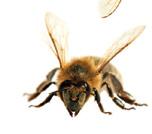
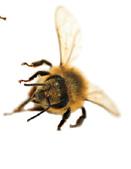
 BY TAYLOR SMITH
BY TAYLOR SMITH
When settlers from England brought the first honeybees to North America in 1622 (blog.education. nationalgeographic.org), the area was already populated by thousands of different species of bees. Some of these native species functioned as solitary insects where female bees would search for pollen and raise their young as a solitary unit, rather than part of a hive.
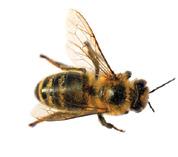
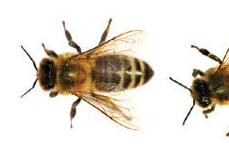
Today, New Jersey’s apiarists all work with the descendants of European honeybees. These bees are used to pollinate the state’s fruits, vegetables, trees, and flowers. Without these industrious insects the human food system as we know it would fall apart. Unfortunately, bees are under attack from pesticides, insecticides, and disease (specifically varroa mites imported from Asia). Thanks to the committed work of state apiarists, the honeybee continues to survive. It does make one realize that our food system is a fragile balance of man and pollinators. While butterflies and other forms of bees do in fact pollinate crops and flowers, none are as efficient and hardworking as a hive of honeybees who , in no uncertain terms, literally work themselves to death each summer season.
Brad Smith of Princeton Lavender bought his farm property at 3741 Lawrenceville Road in Princeton with his wife Beth back in 2015. They began
to grow lavender in 2016 and gradually added more and more farm elements including bees, chickens, alpacas , and goats. While Smith initially tried his own hand at beekeeping, he struggled to maintain the hives through the winter months and soon employed the help of Mill Creek Apiary in Medford. Smith likes to refer to Mill Creek owner Jason Shoff as the “beeman.”
While Mill Creek doesn’t visit the farm from November 30 through March 1 (which is considered the winter season in New Jersey), the apiarists do a great job of maintaining Smith’s colonies during the freezing temperatures. “A good apiary can build the hives and sustain them throughout the year,” he says. “That is what Mill Creek does.”
When asked why bees are so significant to the farm’s production of lavender, Smith explains, “The bees are central. They increase the production of flowers and allow for the plants to be healthier. They also produce amazing honey from the flowers, which we sell at Princeton Lavender. I always see the bees on the plants. They are just working all the time. They are gentle creatures. I have never seen them sting a farm animal — ever.”
During the warmer months, Mill Creek services Smith’s colonies every two to four weeks. “They’re actively in the hives, which are kept on our farm,” says Smith. “Some seasons they’re feeding the hives and other times they are testing to make sure the hive is clean. They check on health, making sure that the queen is healthy. A good queen should lay 1,000 eggs per day.”
So, what is the difference between natural raw honey like that sold at Princeton Lavender and generic honey that can be purchased at a grocery store? Raw honey is not pasteurized. With pasteurized honey, the liquid is cooked to a certain temperature to eliminate bacteria. Most health enthusiasts and naturopaths will suggest live raw honey over pasteurized honey because the bacteria have been shown to boost immunity, reduce allergies, and lessen coughs and colds.
In addition, raw honey is incredibly delicious. “I like to add it to tea or hot cocoa,” says Smith. “I also use it on charcuterie boards or a slice of toast with peanut butter.”
For those interested in starting their own hobby bee colony, Smith suggests beginning with some basic research. “Many New Jersey businesses can sell you a NUC (a nucleus colony, which is a small-sized hive ),” he says. “I would also recommend taking classes from an apiary and learn from that.”

It is also important to not use chemicals on your yard. One of the primary causes of honeybee death is the widespread use of chemical treatments on lawns, parks, and farmland. When you spray weed killer on your lawn, the honeybees can come in contact with it and they then carry it back to the hives. This infects honeybee larvae, causing them to die or to develop brain damage, explains Smith.
Grant Stiles of Stiles Apiaries in Fords is the former state apiarist of New Jersey. He now operates an impressive 10,000 colonies during the summer months, providing pollinators for New Jersey’s blueberry and cranberry farmers ( among others). Stiles Honey is currently the largest honey packer in the state. His products can be found at Wegmans, Whole Foods, ShopRite, Kings Food Markets , and more. Stiles is also a co-packer for Mike’s
Hot Honey, a successful condiment brand that is commonly marketed as a spicy honey to top off your favorite pizza.
Stiles was introduced to beekeeping by his father, who started it as a hobby when Stiles was 8 years old. “I don’t know exactly what appealed to me about it, but I know I was good at it ,” he says.
was to supervise and regulate the entire beekeeping industry throughout the state of New Jersey.
In addition to producing his own honey, Stiles leases his bee colonies to both local and nationwide farmers, which is how most commercial apiarists make their living. “Farmers need bees for pollination purposes,” he says. “Blueberries start right after Easter. We also have cranberries, apples, cucumbers, vine crops like pumpkins and squash — they all require bee pollination to flourish and grow.”
For Stiles, the beekeeping season never really starts or ends, but it is busiest during the spring and summer months. He is also quick to add that it is very physical work; something that people may not understand.

Stiles went on to graduate from Pennsylvania State University with a degree in entomology. As the state apiarist (a role he began in 1993), Stiles’ job
Interestingly, most of the honeybee colonies in the U.S. get shipped to California at the beginning of February for almond season. But whenever colonies are shipped out to the farmers’ locations, there is a potential for bee loss. This may be due to varroa mites, fungicides , or the use of pesticides and chemical sprays. Honeybees can travel up to a 3-mile radius, so even if the farmer isn’t using pesticides on their
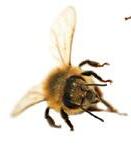
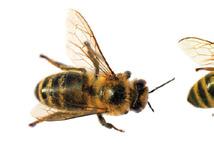
crops, a neighboring property might be.
To combat honeybee death, Smith suggests that people rethink the notion of a “perfect lawn.” Instead of the superficial, electric-green synthetic appearance, bees would much prefer wild plants, trees, patches of clovers , and dandelions.
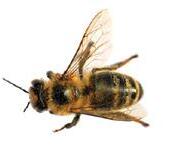
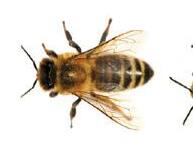

Craig Tanis of Tanis Apiaries in Pompton Plains was introduced to beekeeping by a colleague who had kept bees for many years and was a member of the New Jersey Beekeepers Association (NJBA). As Tanis dove further and further into research, he became fascinated by the manners and behaviorisms of the colonies and decided to try his hand at beekeeping. He ordered his first package of bees from Georgia and has expanded over the years to approximately 21 hives and 12 nucleus colonies. He does this by raising his own queens and overwintering the nucleus colonies.
Like many of his fellow apiarists, Tanis is intrigued by the many medicinal benefits of raw, locally-sourced honey.
“Many people talk about how local raw honey can help with seasonal allergies,” he says. “I never believed it until I started to keep bees and ate my own honey. I suffered from spring allergies my whole life, but
several years after I started keeping bees, I noticed that my allergies were subsiding. I now have very little allergy symptoms So, what I tell people now is that since everyone is different, local raw honey will not help everyone, but it certainly can help with allergies, and I am living proof of that. It will not help to start in April when you feel the symptoms; you should take it consistently all year long.”
Tanis typically consumes his own honey in tea, but is also known to take a tablespoon or two when his energy is low after a long day working in the bee yards.
Tanis Apiaries also carries homemade beeswax products. Their beeswax natural lip balm is made with avocado oil (a natural sunblock), vitamin E, beeswax, and a natural flavor oil. He notes that his customers have had an overwhelmingly positive reaction to Tanis Apiaries’ products.
“Customers are always surprised at the variety of color and taste of the honey, especially when I tell them it is all based on what flowers the bees have taken the nectar from,” he says. “Each batch of honey is different depending on what flower was blooming at that time.”
Another aspect of raw honey is that it will crystallize over time. This does not mean that it has gone bad, but is a sign of raw honey’s low water content. “If someone wants liquid honey again, they can simply place the jar into a pot of water, hot to the touch, and the crystals will melt again. Never use the microwave,” explains Tanis.
Tanis Apiaries products can be purchased at River Bend Farm in Peapack, Sweetman’s Farm in Warwick, and Circle 3 Farms in Pompton Plains. He also sells them from his front porch via an old-fashioned honor system and website at freewebstore.org/tanisapiaries.
Owned and operated by Jason Shoff, Mill Creek Apiary operates on local farms and private properties throughout South and Central New Jersey including Medford, Princeton, Jobstown, and other towns in between. Mill Creek manages about 300 hives including their own production and nucleus colonies. The organization currently operates a storefront at 1 North Main Street in Medford, where their delicious honey products can be purchased.

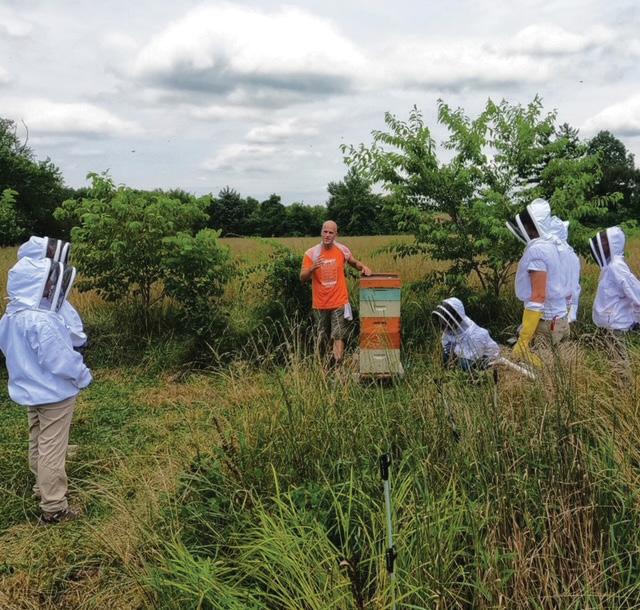
Growing up in a rural part of Northwestern New Jersey, Shoff has always respected and appreciated nature. He recalls the pain of being stung by bees while out in the barnyard and being fascinated (and a bit scared) by the roar of a swarm of honeybees. It was this sense of awe that followed him into adulthood as he sought to learn the ways and habits of honeybees and the craft of raising them.
Mill Creek was started in 2005 by Shoff’s predecessor and mentor. Upon his retirement in 2018, Shoff purchased the business and began rebranding the company’s identity and personality.
One of the interesting things that Mill Creek does is raising and tailoring their own queens. A very complicated and tedious process, the company aims to breed the queens for certain desirable traits. These include gentleness, winter hardiness, and good honey production.
“To raise queens, we choose which colonies (queens) exhibit the traits we desire, and we graft eggs from those colonies by carefully moving them to a special device and environment where those eggs will develop into queens,” he says. “And then we can utilize those queens to start new colonies or
re-queen colonies where the queen is failing or undesirable.”
The honey produced by Mill Creek is exceptional in its flavor and variety. Depending on the location where the bees were harvesting their honey, the product will taste slightly different. For example, wildflower honey will taste unique from honey where the bees were pollinating blueberry fields and cranberry bogs. “In our area, spring honey tends to be lighter than fall honey,” says Shoff. “We also make infused honey and several flavors of spreadable creamed honey.”
Mill Creek offers a special service in which they will remove an unwanted bee colony from someone’s property. Pest control companies will not kill honeybees, and Shoff is quick to point out that killing a honeybee nest yourself is not a good idea. First, not only are honeybees environmentally beneficial, but an empty nest filled with honeycombs will most certainly attract pests. Many times, the cluster of bees can simply be moved to one of Shoff’s apiaries and the bees will have a better chance of survival. If the honeybees have built a nest within the wall or structure of a home, the bees will need to be rescued and rehabilitated.
For those interested in learning opportunities, Mill Creek’s Hive Dive
Workshops at different farm apiary locations enable participants to experience the inner workings of a honeybee colony.


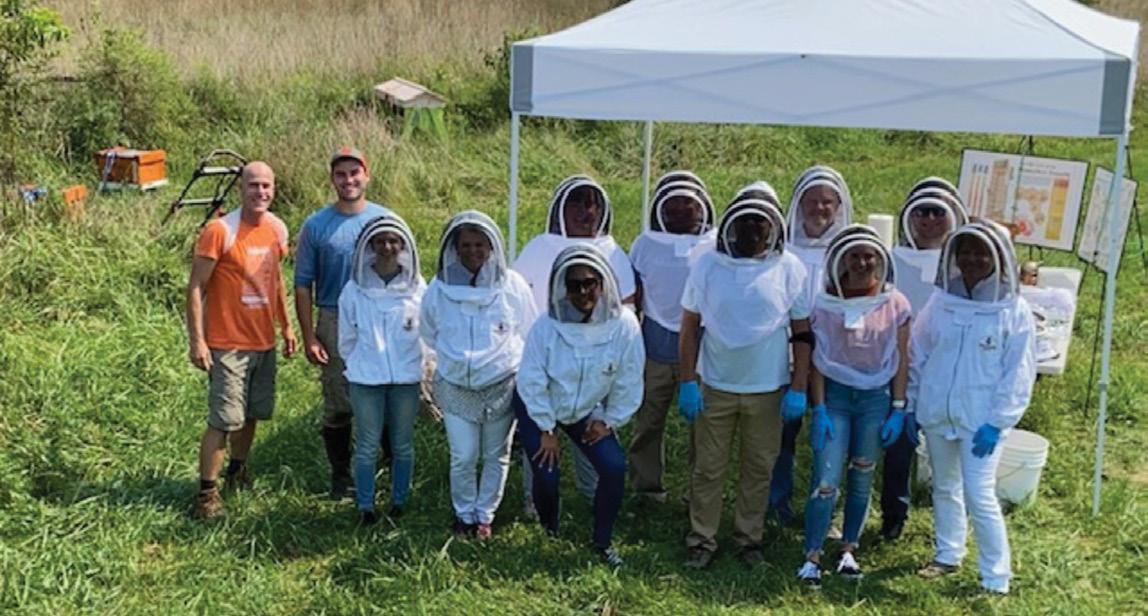
“My hope with each group is to change the perception of honeybees, which may lead to having a more open mind and less fear of insects,” Shoff says. Workshop dates are listed at millcreekapiary.com. Their honey products can also be purchased online as well. Regarding people’s fear of insects, Stiles of Stiles Honey emphasizes, “only in the United States are we afraid of bees. If you go to Mexico or Latin America, there are bees everywhere. They sit on tables, on watermelons. It’s a cultural thing we have developed, this fear of bees, but we need to get over it.”
Perhaps once people overcome their fear of honeybees and all insects, we can better learn to cohabitate and celebrate the powerful strength and beauty of our pollinator friends. William Butler Yeats imagined the same in “The Lake of Innisfree”:
“I will arise and go now, and go to Innisfree,
And a small cabin build there, of clay and wattles made;
Nine bean-rows will I have there, a hive for the honey-bee,
And live alone in the bee-loud gale.”












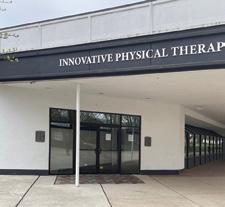




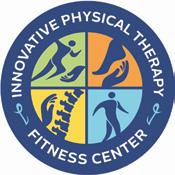


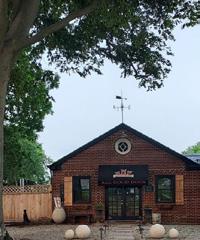






STONE HARBOR TRIP MADE EASIER TO PLAN


 BY LAURIE PELLICHERO
BY LAURIE PELLICHERO
It’s summertime, and escapes to the Jersey Shore offer sun, sand, and a plethora of delicious dining opportunities. Here’s a sampling of waterside restaurants just an hour or so away…

CHARLIE’S OF BAY HEAD
72 Bridge Avenue, Bay Head 732.295.1110; charliesofbayhead.com
Set on Twilight Lake in Bay Head, Charlie’s features waterside dining and contemporary American cuisine in a upscale setting. It offers both indoor and outdoor dining areas, along with a spacious bar that’s a great place to meet friends. Lunch, dinner, and Sunday brunch are served, and specialties include appetizers of Jumbo Crab Deviled Eggs, Roasted Octopus, Warm Whipped Feta, Spicy Tuna Tartare, and Salmon Poke along with East and West Coast Oysters and Chilled Seafood Tower. A variety of salads, pizza, pastas, and burgers are on the menu, as well as entrees such as Grilled Filet Mignon with roasted shiitake mushrooms, whole grain mustardleek cream, and crispy potato matchsticks; Pan Roasted Halibut with lemon risotto and roasted tomato-basil beurre blanc; Petite
Grilled New Zealand Lamb Rack with Israeli couscous, roasted vegetables, and sundried tomato pesto; and Pan Seared Tuna with fingerling potatoes, Calabrian Chile piquillo chimichurri, and roasted grape tomatoes.
Cocktails, craft beer, and wine lists are offered, as well as house made desserts. The Great Room and Wine Room are available for private events.
Charlie’s of Bay Head is open for lunch Monday and Wednesday-Saturday from 11:30 a.m. to 2:45 p.m. Sunday brunch is served from 11 a.m. to 2:30 p.m. Dinner is Monday and Wednesday 5 to 11 p.m., Tuesday 4 to 11 p.m., Thursday-Saturday 5 to 11:30 p.m., and Sunday 4:30 to 11 p.m. Reservations are recommended.
10 24th, Central Avenue, Seaside Park 732.854.1588; chefmikesabg.com
Located oceanside in South Seaside Park right before the entrance to Island Beach State Park, Chef Mike’s Atlantic Bar and Grill specializes in seafood and upscale American cuisine. The restaurant is owned and operated by Mike Jurusz, a Brick native and one of the area’s most renowned chefs. For more than 35 years, Jurusz has been devoted to creating dishes that both “thrill and fill.”
Appetizers include Steamed Clams with garlic basil butter and crostini; Grilled Octopus with butter beans, charred
radicchio, chimichurri sauce, crispy chickpeas, marinated tomatoes, and lemon oil; Spicy Tuna Tartare with avocado, kewpie mayo, cucumbers, scallions, sriracha, and flatbread; and house-made peppery Bar Bacon. The Hot Sampler with fried calamari, chicken dumplings, mini crab cakes, shrimp tempura, and assorted dipping sauces is great to share.
The menu also features entrees such as Pan Seared Local Sea Scallops with spring pea risotto, crispy pork belly, and crushed pistachios; Miso Glazed Salmon and Lobster

with jasmine rice, baby bok choy, and crispy scallions; Peppered Filet Mignon Medallions with lump crab, blue cheese cream sauce, butter mashed potatoes, and spinach; and Grilled 14 oz. Prime Pork Chop with roasted onions and peppers, Italian sausage, crispy potatoes, and white wine garlic butter.
Daily specials are offered, and the full bar with high top tables has ocean views.

Chef Mike’s ABG is open Wednesday and Thursday 5 to 9 p.m., Friday and Saturday 5 to 10 p.m., and Sunday 4 to 9 p.m. Reservations are recommended.
MARINA GRILLE
905 Route 35 South, Belmar 732.894.3211; marinagrillenj.com
Overlooking the Belmar Marina, Marina Grille is known for its amazing views, expansive waterfront patio, and casual American cuisine. It also features a Tiki Bar, Deck Bar, an outdoor area with fire pits, and an indoor bar with multiple TVs for viewing sports events.

Open for lunch and dinner, favorites include the Raw Bar with fresh oysters,

local clams, and shrimp and crab cocktails; Corn Fritters; Citrus Calamari; Tuna Nachos; Buffalo Wings; Lobster Bisque; and Spicy Garlic Shrimp.
Main dishes include Jumbo Lump Crab Cakes with crispy bacon, lemon aioli, heirloom tomato, pickled red onion, and Old Bay potato chips; Linguine with White Clam Sauce; Spicy Rigatoni Vodka; Tuna Tower with ahi tuna, mango, avocado, crab, coconut ginger rice, sriracha, and eel sauce; and Grilled Salmon with smoked shallot cream, slow-roasted tomatoes, grilled shallots, and charred scallions.
A variety of brick oven pizzas are offered such as Cracked Egg with mozzarella, parmesan, prosciutto, spinach, fried egg, and cracked pepper; Spicy Chicken with San Marzano tomatoes, fried chicken cutlet, fresh mozzarella, pickled cherry peppers, wild arugula, and balsamic reduction; and New Haven Clam Pizza with chopped clams, Calabrian chili, fresh parsley, extra virgin olive oil, and lemon.
Marina Grille is open Sunday through Thursday 11:30 a.m. to 12 a.m. and Friday and Saturday 11:30 a.m. to 1 a.m. Reservations are not accepted.

799 Route 70, Brick Township 848.232.4235; beacon-70.com
Established in 2017, Beacon 70 is a full service restaurant, sports bar, and marina with waterside views of the Metedeconk River. Its diverse menu includes brick oven artisan pizzas,
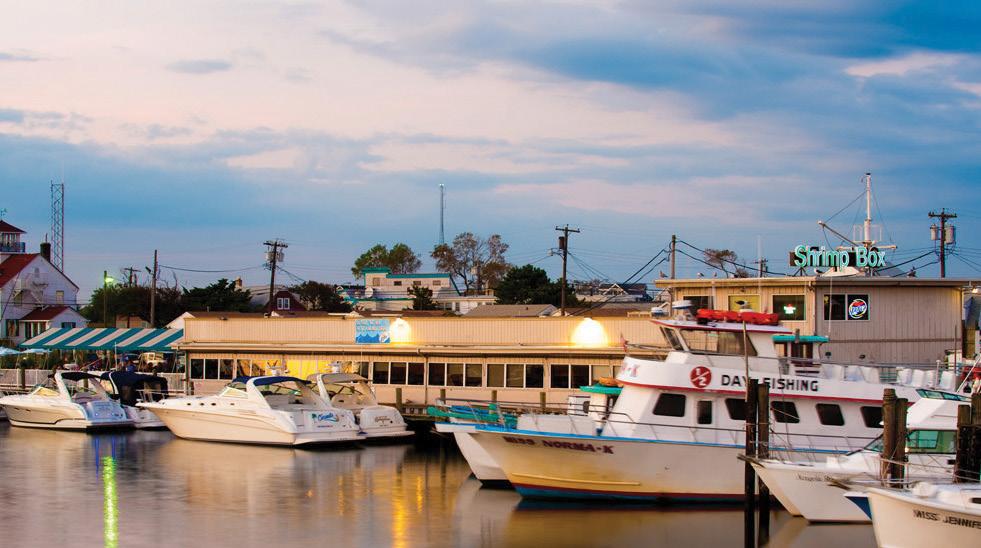
handcrafted burgers, raw bar, wings, seafood, steaks, and more.
Features in the casual setting include a suspended 18-foot video wall, 60 HD screens, stadium surround sound, two full bars, a waterfront folding glass wall, a 10-foot see-through glass fireplace, and a 19th century industrial modern steampunk design. It is situated on the site of the historic Beacon Manor Hotel, and was built using reclaimed wood from the hotel.
Lunch, dinner, and weekend brunch are offered, featuring a rotating section of dishes that showcase seasonal ingredients. Daily, Early Bird, Happy Hour, and Tuesday Burger Night specials are featured, and live music is offered on select nights.
Beacon 70 is open Monday through Thursday 11 a.m. to 11 p.m., Friday and Saturday 11 a.m. to 2 a.m., and Sunday 10 a.m. to 11 p.m. Reservations are accepted for parties of 8 or more.
75 Inlet Drive, Point Pleasant Beach 732.899.1637; theshrimpbox.com
“We overlook nothing but the harbor” is the motto at The Shrimp Box. The
restaurant that began as a small takeout seafood stand in the 1940s has grown over the years to become a family-owned Jersey Shore institution with a 300-foot harborside outdoor patio, fresh local seafood, creative cocktails, a relaxed atmosphere, great views, and a devoted following.

Appetizers include Crispy HoneyLime Shrimp, Cilantro Seared Scallops, Blackened Tuna Bites, Pretzel Crusted Calamari, and Shishito Peppers. Sandwiches and wraps such as Jumbo Lump Crab Cake, Buffalo Chicken, Grilled Shrimp and Bacon, and Fish Tacos are favorites.

A variety of soups and salads are offered, along with entrees such as Golden Fried Wild Caught Shrimp, Flounder Milanese, Surf and Turf, Linguini with White Clam Sauce, Pan Seared Scallops, Grilled Mediterranean Chicken, Pan Seared Three Pepper Tuna, and Lobster Pasta.
The restaurant and patio are open seven days a week from 12 to 9:30 p.m., 10 p.m. on Saturday. Reservations are accepted.
101 Channel Drive, Point Pleasant Beach 732.892.9100; wharfsidenj.com.
Dedicated to fresh local seafood, The Wharfside Seafood & Patio Bar has been a Jersey Shore destination since it was founded by Jack Baker in 1963. The restaurant partners with Point Pleasant Beach purveyors to serve the best seasonal catch year-round. There is an upstairs dining room with sweeping views of the Manasquan Inlet, and the Patio Bar is waterside on a huge deck with more casual fare and local live music.
The restaurant offers a relaxed dining experience and classic fare such as its Raw Bar with Blue Point Oysters, Local Clams, Jumbo Shrimp, and Seafood Tower with whole lobster, snow crabs, shrimp, oysters, and clams. Appetizers include Calamari, Mussels, Steak Skewers, Char-Grilled Octopus, and Ahi Tuna Nachos.
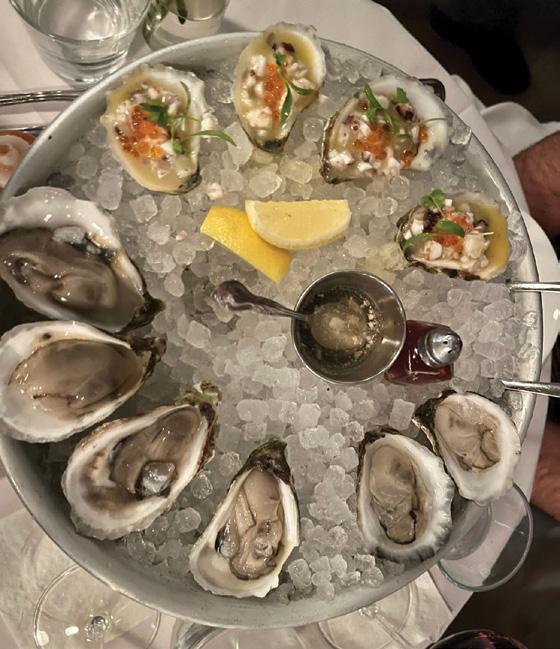
A variety of salads, sandwiches, and pizzas are on the menu, along with entrees including Grilled Mahi-Mahi with cashew, peppers, and pineapple fried rice; CrabStuffed Shrimp with Cajun hollandaise,
sliced banana peppers, warm cheddar biscuit, and roasted potatoes; Local Lobster with Old Bay fries and coleslaw; and Filet Mignon with port wine demiglace, whipped potatoes, herb compound butter, and vegetable mélange.
The Wharfside Seafood & Patio Bar is open Sunday through Thursday 11:30 a.m. to 11 p.m. and Saturday and Sunday 11:30 a.m. to 12 a.m. Reservations are not accepted.

100 Ocean Avenue North, Long Branch 732.870.1200; rooneysocean.com
Established in 1995, Rooney’s Oceanfront Restaurant in Long Branch specializes in carefully crafted cuisine in a unique setting featuring a dining room with full windows and a bi-level outdoor deck that brings diners even closer to the Atlantic Ocean. The menus change continuously to offer diners a different experience at each visit.
With the Fish Board, available at both lunch and dinner, diners can choose a fish from selections like Fresh Catch, Atlantic Salmon, Branzino, and Yellowfin Tuna; their preferred preparation; a sauce on the side such as sweet chili and garlic, lemon butter, or tomato vinaigrette; and two sides including Mashed Gouda Cauliflower, Parmesan Polenta Cake, and Crispy Brussels Sprouts.
Starters include Whole Baked Artichoke, Spanish Mussels, Char-Grilled Oysters, Not Your Grandma’s Meatballs, and Tuna Bruschetta. For lunch, diners can choose items such as Lobster Mac-a-Rooney, Blackened Fish Tacos, Shrimp Salad Sliders, and Chicken Caprese Wrap.
Rooney’s Crab Cakes with cornflake

crust, grilled asparagus, fingerling potato, and red pepper aioli; Rooney’s Combo with seafood stuffed flounder, scallops, shrimp, citrus herb butter, and wild rice blend; and Chairman’s Reserve Skirt Steak with Parmesan truffle fries and chimichurri sauce have been recent selections on the dinner menu.
Rooney’s features two full bars, one inside with ocean views and one outside open during the warmer months. The restaurant also hosts private parties for up to 60 guests.
Rooney’s Oceanfront Restaurant is open Sunday through Thursday 11:30 a.m. to 9 p.m. and Friday and Saturday 11:30 a.m. to 10 p.m. Reservations are accepted.
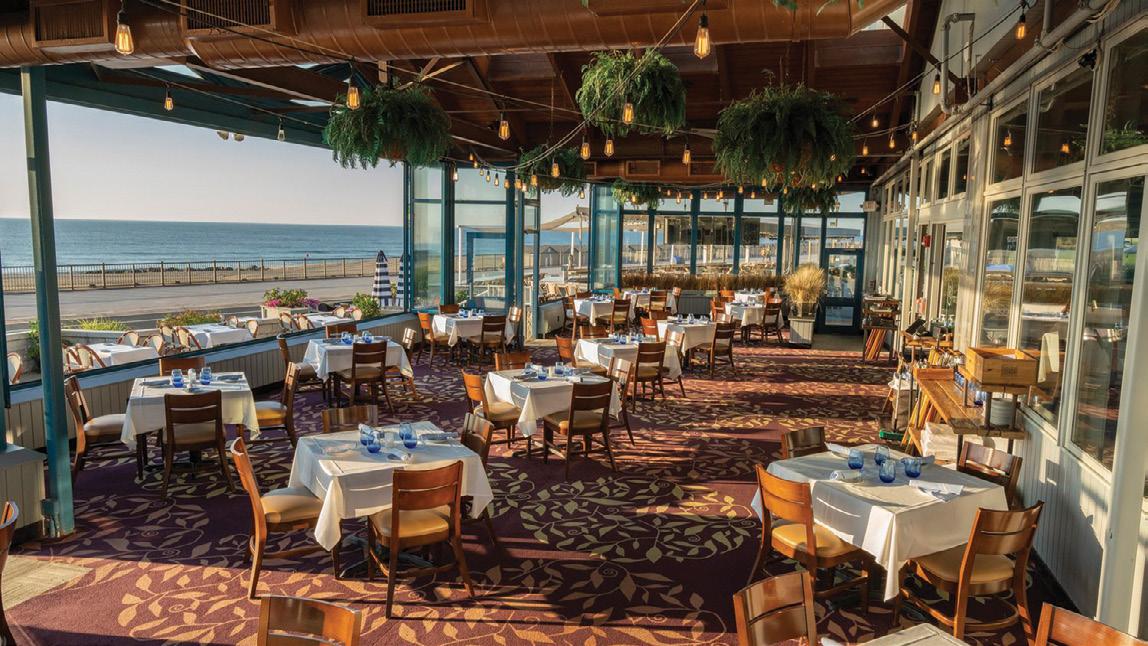
Enjoy!
Menus and hours are subject to change. Check websites for updates.

At the core of Terra Momo’s culinary philosophy is a deep appreciation for a “taste of place.”




We believe that food should speak eloquently of its provenance — its soil, its climate, and the people who nurture it.



Experience Teresa’s now located next

to Albariño.

Hereu Bena Interwoven Knotted T-bar sandals; $500; fredsegal.com
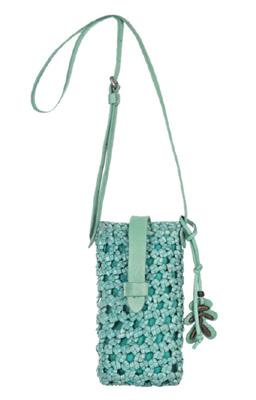

Lulu and Georgia Valar double tier jute pendant light; $398; luluandgeorgia.com

Maggie Cruz Home Calzada cabinet; $7,000; maggiecruzhome.com

La Rochelle Belle Ile wine glass set of 6; $77; larochere-na.com

Henry Beguelin Intreccio Viennese Turchese iPhone bag; price upon request; shop.henrybeguelin.it
Barbara McMahon Sea Glass Friends iPhone case; $20; fineartamerica.com


Vintage Balmain sunglasses; $390; burningtorchinc.com

Serena & Lily Tulum cheese set; $118; serenaandlily.com

Restoration Hardware Luka dining armchair; $635; rh.com

Nicolette Mayer Turiq Happy hemstitch linen/cotton cocktail napkin set of 4; $40; nicolettemayer.com
Alessandra Baldereschi Greenwood pitcher for Ichendorf; $81; shopdecor.com

Restoration Hardware Open Round dining table; $3,540; rh.com



Formations Cross Framed armchair; price upon request; formationsusa.com

Gustav Klimt Maria Munk linen cocktail napkins; price upon request; loose-leaf.ie

Lola Nomad wide brim raffia hat with black ribbon; $595; designmenagerie.com.com

Paul Morelli Sequence drop earrings in 18k yellow gold, diamond, and black onyx; $1,600; bergdorfgoodman.com

Kim Seybert Paillette platinum double old fashioned set of 4; $118; rsvp-style.com

Kim Seybert Paillette platinum pitcher; $160; salliehome.com


Formations French Garden dog; price upon request; jerrypairatlanta.com
Formations Lourdes cast stone dining table; price upon request; formationsusa.com


Formations Cardinal candlestick; price upon request; formationsusa.com
Katu Anna straw clutch; $225; shopbop.com

Manolo Blahnik Patopia snakeskin halter slingback sandals; $795; bergdorfgoodman.com

Formations Helios chandelier; price upon request; formationsusa.com









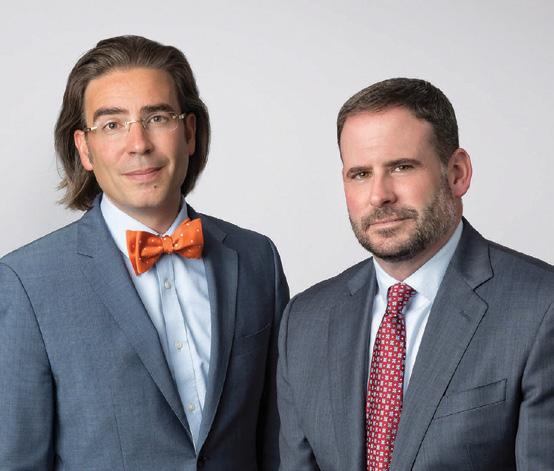
Princeton Financial Partners
Michael Gara
Managing Director – Financial Advisor
Senior Portfolio Manager – Portfolio Focus
Forbes/SHOOK Best-In-State Wealth Advisors, New Jersey: 2021, 2023
Barron’s Top 1,200 Financial Advisors: 2019, 2020, 2021, 2023
Chad Goerner, CFP®, CIMA®
Senior Vice President – Financial Advisor
Corporate Retirement Director
Senior Institutional Consultant
Forbes/SHOOK Best-In-State Wealth Advisors, New Jersey: 2020, 2021, 2023
PLANADVISER Top Retirement Plan Advisers: 2023
us.rbcwm.com/princetonfinancialpartners
The 2023 Plan Adviser “Top Retirement Plan Advisers” award was announced April 2023. Data as of December 2022. The award is based on the following criteria: the dollar value of qualified plan assets under advisement, and the number of plans under advisement. This award does not evaluate the quality of services provided to clients and is not indicative of the advisor’s future performance. The financial advisor does not pay a fee to be considered for or to receive this award.
The 2023 Forbes “Best-In-State Wealth Advisors” award was announced April 2023. Data as of 6/30/2022. The 2021 Forbes “Best-In-State Wealth Advisors” award was announced February 2021. Data as of 6/30/2020. The 2020 Forbes “Best-In-State Wealth Advisors” award was announced January 2020. Data as of 6/30/2019. The award was developed by SHOOK Research and is based on in-person and telephone due diligence meetings to evaluate each advisor qualitatively, a major component of a ranking algorithm that includes: client retention, industry experience, review of compliance records, firm nominations; and quantitative criteria, including: assets under management and revenue generated for their firms. Investment performance is not a criterion because client objectives and risk tolerances vary, and advisors rarely have audited performance reports. Rankings are based on the opinions of SHOOK Research, LLC and not indicative of future performance or representative of any one client’s experience. Neither Forbes nor SHOOK Research receive compensation in exchange for placement on the ranking. The financial advisor does not pay a fee to be considered for or to receive this award. This award does not evaluate the quality of services provided to clients. This is not indicative of this financial advisor’s future performance. For more information: www.SHOOKresearch.com.
The 2023 Barron’s “Top 1,200 Financial Advisors” award was announced March 2023. Data as of 9/30/2022. The 2021 Barron’s “Top 1,200 Financial Advisors” award was announced March 2021. Data as of 9/30/2020. The 2020 Barron’s “Top 1,200 Financial Advisors” award was announced March 2020. Data as of 9/30/2019. The 2019 Barron’s “Top 1,200 Financial Advisors” award was announced March 2019. Data as of 9/30/2018. The award is based on the following criteria: The individual is credentialed as a FINRA registered representative, assets under management, revenue produced for the firm, regulatory and compliance record. The financial advisor does not pay a fee to be considered for or to receive this award. This award does not evaluate the quality of services provided to clients. This is not indicative of this financial advisor’s future performance.
and insurance products offered through RBC Wealth Management are not insured by the FDIC or any other federal government agency, are not deposits or other obligations of, or guaranteed by, a bank or any bank affiliate, and